

Zitierweise / cite as:
Payer, Alois <1944 - >: Chronik Thailands = กาลานุกรมสยามประเทศไทย. -- B. E. 2472 / 1929-04 - 1930-03 (Rama VII.). -- Fassung vom 2017-01-12. -- URL: http://www.payer.de/thailandchronik/chronik1929-30.htm
Erstmals publiziert: 2013-10-16
Überarbeitungen: 2017-01-12 [Ergänzungen] ; 2016-08-24 [Ergänzungen] ; 2016-05-31 [Ergänzungen] ; 2016-02-25 [Ergänzungen] ; 2016-01-29 [Ergänzungen] ; 2016-01-06 [Ergänzungen] ; 2015-12-21 [Ergänzungen] ; 2015-12-09 [Ergänzungen] ; 2015-11-11 [Ergänzungen] ; 2015-09-14 [Ergänzungen] ; 2015-08-10 [Ergänzungen] ; 2015-06-22 [Ergänzungen] ; 2015-02-24 [Ergänzungen] ; 2015-01-27 [Ergänzungen] ; 2015-01-13 [Ergänzungen] ; 2014-11-26 [Ergänzungen] ; 2014-08-18 [Ergänzungen] ; 2014-07-02 [Ergänzungen] ; 2014-04-15 [Ergänzungen] ; 22014-12-31 [Ergänzungen] ; 014-03-30 [Ergänzungen] ; 2014-03-05 [Ergänzungen] ; 2013-12-03 [Ergänzungen] ; 2013-10-30 [Ergänzungen]
©opyright: Dieser Text steht der Allgemeinheit zur Verfügung. Eine Verwertung in Publikationen, die über übliche Zitate hinausgeht, bedarf der ausdrücklichen Genehmigung des Herausgebers.
Dieser Text ist Teil der Abteilung
Thailand von
Tüpfli's Global Village Library
ช้างตายทั้งตัวเอาใบบัวปิดไม่มิด
|
Gewidmet meiner lieben Frau Margarete Payer die seit unserem ersten Besuch in Thailand 1974 mit mir die Liebe zu den und die Sorge um die Bewohner Thailands teilt. |
|
Bei thailändischen Statistiken muss man mit allen Fehlerquellen rechnen, die in folgendem Werk beschrieben sind:
Die Statistikdiagramme geben also meistens eher qualitative als korrekte quantitative Beziehungen wieder.
|
| Statistisches: Fläche, auf der Cannabis (กัญชา) angebaut wird: 688 rai (110 Hektar) Laut Schätzung des Völkerbunds gibt es in Siam
|
1929

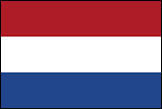
Rama VII. zum Antrag des Finanzministeriums, Beamte nach Niederländisch Indien / Nederlands-Indië zu senden, damit sie das dortige Steuersystem studieren. Der König befürwortet den Vorschlag und schreibt:
"In Java there is still a capitation tax, but they are considering abolishing it, and we should too. What should we do to insure that taxation is in accord with ability to pay? It is said that the incidence of taxation falls heavily on the poor, and that the wealthy are not taxed at all proportionally. In Java there is land tax and an income tax and also various ‘rates’. But there are some who protest that this taxation is excessive. We should study their system of taxation, including the various 'rates’, and select what is appropriate for our situation. But it must be a system in which the wealthy pay more than the poor." [Übersetzung: Batson, Benjamin Arthur <1942 - >: The end of the absolute monarchy in Siam. -- Singapore : Oxford Univ. Pr., 1984. -- 349 S. : Ill. ; 22 cm. -- (Southeast Asia publications series ; no. 10). -- ISBN 0-19-582612-4. -- S. 96f.]
1929
Eine US-Missionarin berichtet aus Trang (ตรัง):
Abb.: Lage von Trang (ตรัง) und Penang
[Bildquelle: OpenStreetMap. -- Creative Commons Lizenz (Namensnennung, share alike)]
"The rice crop was poor because of excessive rain. The resulting poverty drove many to gambling - men and women gambled away their very clothes. Those who could get their hands on rubber latex made crude rubber sheets to be sold for a good price in Penang. Then dacoits made attacks night after night. Daily greetings of friends meeting on the road amounted to "Who was robbed last night?"" [Quelle: Stanton, Mary Bulkley <1922 - > ; Bulkley, Edna Bruner <1883 - 1962>: Siam was our home : a narrative memoir of Edna Bruner Bulkley's years in Thailand in the 1900s, with added memories from her children. -- Seattle, WA : Hara, 2003. -- 345 S. : Ill. ; 23 cm. -- ISBN 1-887542-14-0. -- S. 246f. -- Faire use]
1929
Gründung des (chinesischen) The Bangkok Liquor Combine. 12 Firmen sind Teilhaber dieses Sydikats.
1929


Rama VII. auf eine Anfrage aus Japan über Möglichkeiten, in Siam Zuckerplantagen zu betreiben:
"As for myself, I am not content for all our land to fall into the hands of foreigners. If the government allows too much land to be taken by foreigners, the people would be justified in thinking of revolting against such a government." [Zitiert in: Batson, Benjamin Arthur <1942 - >: The end of the absolute monarchy in Siam. -- Singapore : Oxford Univ. Pr., 1984. -- 349 S. : Ill. ; 22 cm. -- (Southeast Asia publications series ; no. 10). -- ISBN 0-19-582612-4. -- S. 97]
1929/1930

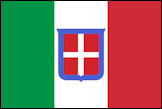
Der italienische Bildhauer Corado Feroci (aka. Silpa Bhirasri - ศิลป์ พีระศรี, 1892 - 1962) schafft die Statue für Phra Phutthayotfa Culalok (Rama I.) (พระบาทสมเด็จ พระพุทธยอดฟ้าจุฬาโลก , 1737 - 1809) nach Entwürfen von Prinz Naris (Narisara Nuwattiwong - สมเด็จพระเจ้าบรมวงศ์เธอ เจ้าฟ้าจิตรเจริญ กรมพระยานริศรานุวัดติวงศ์, 1963 - 1947). Der Bronceguss erfolgt in Milano (Italien). Die Statue wird an der Memorial Bridge (สะพานพระพุทธยอดฟ้า) aufgestellt zur Erinnerung an den 150. Gründungstag von Bangkok.
Abb.: Monument für Phra Phutthayotfa Culalok (Rama I.) (พระบาทสมเด็จ พระพุทธยอดฟ้าจุฬาโลก). 2009
[Bildquelle: Adaptor-Plug. -- http://www.flickr.com/photos/11401580@N03/3677506747/. -- Zugriff am 2014-10-14. -- Creative Commons Lizenz (Namensnennung, keine kommerzielle Nutzung)]
1923 - 1929
Medizinische Versorgung: Öffentliche Krankenschwesternstationen (Public Health Nursing)
[Datenquelle: Siam : general and medical features / by the Executive Committee of the 8th Congress of Far Eastern Association of Tropical Medicine. -- Bangkok : Bangkok Times, 1930. -- S. 278.]
Abb.: Public Health Nursing 1923 - 1929: Gesundheitszentren und Krankenschwestern
Abb.: Public Health Nursing 1923 - 1929: Behandelte Personen (Kinder / Erwachsene)
Abb.: Public Health Nursing 1923 - 1929: Behandlungen: Zahnbehandlung / Kleinchirurgie
Abb.: Public Health Nursing 1923 - 1929: Verschreibungen
Abb.: Public Health Nursing 1923 - 1929: Hausbesuche
Abb.: Public Health Nursing 1923 - 1929: Behandlungen: Entbindungen
1929
Gesundheitszustand von Schulkindern:
Die ärztliche Untersuchung von 15.512 Schulkindern aus 22 Schulen ergibt:
- 88% der Buben
- 87% der Mädchen
Haben Krankheitssymptome.
Die diagnostizierten Krankheiten:
Abb.: Bei 15.512 Schulkindern diagnostizierte Krankheiten (in Prozent der Schüler), 1929
[Datenquelle: Siam : general and medical features / by the Executive Committee of the 8th Congress of Far Eastern Association of Tropical Medicine. -- Bangkok : Bangkok Times, 1930. -- S. 259.]
Abb.: Von den als krank diagnostizierten Schulkindern (siehe vorige Abb.) wurden behandelt, 1929
[Datenquelle: Siam : general and medical features / by the Executive Committee of the 8th Congress of Far Eastern Association of Tropical Medicine. -- Bangkok : Bangkok Times, 1930. -- S. 260.]
1929/30
Medizinische Versorgung Bangkoks
Abb.: Medizinisches Personal in Bangkok 1929/30
[Datenquelle: Siam : general and medical features (1930). -- S. 241f.]
Abb.: Herkunft der Diplome von Ärzten in Bangkok 1929/30
[Datenquelle: Siam : general and medical features (1930). -- S. 242.]
1929
Über Hebammen:
"The number of fully trained midwives up to date is 398. The Midwifery School was re-organized in 1926 with the co-operation of the Rockefeller Foundation but the running expenses of the School are still financed out of the Queen Mother’s fund, a bequest made by Her Majesty before her death. The School now gives training in general nursing and midwifery, the course being 3½ years. The age limits for admission have been fixed at 16 to 30 years, and before entering the student is now required to have passed the 6th year examination of the Secondary Schools [มัธยม ๖]. The facilities for instruction include a well equipped demonstration room. The Siriraj Hospital [โรงพยาบาลศิริราช],which provides clinical experience has a capacity for about 300 patients. The services include medicine, surgery, obstetrics, pediatrics, gynaecology, dietetics, out-patient department and other special services. The School has made satisfactory progress. Students are chosen to be sent abroad to Manila and America for further training at the expense of the Rockefeller Foundation. The new home of the nursing students was formerly the Wang Lang Girls’ School of the American Mission. This spacious home was secured by the kindness of His late Royal Highness Prince Mahidol of Songkhla [สมเด็จพระมหิตลาธิเบศรอดุลยเดชวิกรม พระบรมราชชนก, 1892 - 1929]."
[Quelle: Siam : general and medical features / by the Executive Committee of the 8th Congress of Far Eastern Association of Tropical Medicine. -- Bangkok : Bangkok Times, 1930. -- 332 S. : Ill ; 25 cm. -- S. 290f.]
1929
Mittlere Maße von Soldaten:
Durchschnittliches Gewicht 54 kg Durchschnittliche Länge 163 cm Brustumfang beim Einatmen 84,4 cm Brustumfang beim Ausatmen 80,55 cm [Datenquelle: Siam : general and medical features (1930). -- S. 262.]
1929
Geschlechtskrankheiten bei Soldaten:
Abb.: Geschlechtskrankheiten bei Soldaten (in Prozent der Soldaten), 1929
[Datenquelle: Siam : general and medical features (1930). -- S. 263.]
1929
Erstmals studieren in Siam Frauen Medizin.
1929/30
Abrechnung der Siamese Red Cross Society (สภากาชาดสยาม) für das Geschäftsjahr 1929/30:
- 708.000 Baht Einnahmen
- 663.000 Baht Ausgaben
1929

Abb.: Prozession zur Novizen-Ordination (การบรรพชาเป็นสามเณร), Uttaradit (อุตรดิตถ์), 1929
Abb.: Lage von Uttaradit (อุตรดิตถ์)
[Bildquelle: CIA. -- Public domain]
1929

Einweihung des neu gebauten Wihan (วิหาร) von Wat Chedi Luang (วัดเจดีย์หลวง) in Chiang Mai (เชียงใหม่).
Abb.: Wihan (วิหาร), Wat Chedi Luang (วัดเจดีย์หลวง), Chiang Mai (เชียงใหม่), 2015
[Bildquelle: eltpics. -- https://www.flickr.com/photos/eltpics/16346736978/. -- Zugriff am 2015-04-16. -- Creative Commons Lizenz (Namensnennung, keine kommerzielel Nutzung)]
Abb.: Lage von Wat Chedi Luang (วัดเจดีย์หลวง)
[Bildquelle: OpenStreetMap. -- Creative Commons Lizenz (Namensnennung, share alike)]
"Der Wihan Luang wurde 1412 von Tiloka-Chuda, der Mutter des Königs Sam Fang Kaen (สามฝั่งแกน, 1389 - ) erbaut. Im Jahr 1577 wurde er von König Tilokarat (พญาติโลกราช, 1409 - 1487) durch einen 18 × 38 Quadratmeter großen Neubau ersetzt, der aber später nach einem Brand erneut an der alten Stelle errichtet wurde. Da auch dieser Bau aus Holz gebaut war, wurde er 1889 so reparaturbedürftig, dass er von König Intha Wichayanon (พระเจ้าอินทวิชยานนท์, - 1897) abermals abgerissen und neu aufgebaut worden ist. Der heutige Bau stammt von Chao Kaeo Nawarat (มหาอำมาตย์โท พลตรี เจ้าแก้วนวรัฐ, 1862 - 1939). Er ließ 1928 das vorherige Gebäude abreißen und im folgenden Jahr konnte ein abermals auf 19,7 × 50,8 Quadratmeter vergrößerter Wihan eingeweiht werden. " [Quelle: http://de.wikipedia.org/wiki/Wat_Chedi_Luang. -- Zugriff am 2015-04-16]
1929
Es erscheint
ดำรงราชานุภาพ <สมเด็จพระเจ้าบรมวงศ์เธอ กรมพระยา> [Damrong Rajanubhab] <1862 - 1943>: เรึ่องด่านานเมืองระนอง [Zur Geschichte von Ranong]. -- [Bangkok : Sophon, 1929]. -- 109 S. -- (ประชุมพงศาวดาร ; ภาคที่ ๕๐). -- Handelt hauptsächlich von der Na Ranong (ณ ระนอง) Familie nach 1844 und den Nachkommen von Khaw Soo Cheang (许泗章 / คอซูเจียง = พระยาดำรงสุจริตมหิศรภักดี, 1797-1882)
Abb.: Lage von Ranong (ระนอง)
[Bildquelle: OpenStreetMap. -- Creative Commons Lizenz (Namensnennung, share alike)]
1929
Es erscheint:
ดำรงราชานุภาพ <สมเด็จพระเจ้าบรมวงศ์เธอ กรมพระยา> [Damrong Rajanubhab] <1862 - 1943>: อธิบายเรื่องเครื่องมโหรีปี่พาทย์. -- พระนคร : โสภณพิพรรฒธนากร, 2472. 15 S.
"อธิบายเรื่องเครื่องมโหรีปีพาทย์ (Athibai rüang khrüang mahori piphat). An Introduction to Thai Orchestral Instruments. Sophon Press, 1929. (3) + 15 pp. Discussion of traditional Thai musical instruments, with special reference to those adopted from India; revision of the introduction to the Wachirayan Library’s A Collection of Mahori Songs, Both Old and New (1920), also included in A Historical Account of the 'Inao' Drama by Damrong in 1921. This 1929 version was reprinted with an English translation titled ‘Siamese Musical Instruments’ in A Historical Account of Thai Orchestral Instruments (ตำนาน เครื่องมโหรีปีพาทย์, Tamnan khrüang mahori piphat, Bangkok Times Press, 1931). It was translated into French and published in Extrême-Asie (Saigon, September 1928) and translated into Dutch and published in Nederlandsch-Indië Oud & Nieuw (The Hague, July 1929)" [Quelle: Breazeale, Kennon: The writings of Prince Damrong Rajanubhab : a chronology with annotations. -- Bangkok : Toyota Thailand Foundation : Foundation for the Promotion of Social Science and Humanities Textbooks Project, 2008. -- 60 S. ; 22 cm. -- ISBN 9789740697411. -- S. 42f.]
1929
Abb.: Phuket (ภูเก็ต), 1929
Abb.: Phuket (ภูเก็ต), 1929
Abb.: Lage von Phuket (ภูเก็ต)
[Bildquelle: OpenStreetMap. -- Creative Commons Lizenz (Namensnennung, share alike)]
1929
Abb.: Lehrer und Studenten der Siriraj Medical School (คณะแพทยศาสตร์ศิริราชพยาบาล), 1929
1929
Zensus
Abb.: Einwohner gemäß Zensus in Mio., 1911 - 1947
[Datenquelle: Ingram (1971), S. 46]
Abb.: Alterspyramide gemäß Zensus 1929 (in 1000 EW)
[Datenquelle: Mitchell (1982), S. 60]
1929 - 1947
Arbeitskräfte:
Arbeitskräfte in Landwirtschaft/Fischerei/Forst und Sonstigem, 1929 - 1947
[Datenquelle: Ingram (1971), S. 57]
1929-05 - 1929-12
Entwicklung des Reispreises in Bangkok
Abb.: Preis (Baht) pro Kwian (เกวียน, 2000 l) Reis in Bangkok, Mai bis Dezember 1929
[Datenquelle: Rural economic survey 1930 - 1931. -- S. 186f..]
1929/1930
Der chinesische Geschäftsmann und Reis-Spekulant Lee Teck-ow (李柱溪) macht bankrott und geht nach Shantou/Swatow (汕头) ins Exil, wo er auf ungeklärte Weise stirbt.
1929
Durchschnittliche Betriebsgröße bäuerlicher Betriebe je Monthon (มณฑล):
Abb.: Durchschnittliche Betriebsgröße bäuerlicher Betriebe (in ha = 10.000 m²) 1929
[Datenquelle: Credner (1935), S. 205]
1927/29
Kultivierte Kokospalmen:
Abb.: Kultivierte Kokospalmen (Cocos nucifera L.) (in Tausend) 1927/1929
[Datenquelle: Credner (1935), S. 236]
Abb.: Kokosplantage, Prachuab Khiri Khan (ประจวบคีรีขันธ์), 2008
[Bildquelle: Bob. -- http://www.flickr.com/photos/loindesyeux/2818515287/. -- Zugriff am 2012-02-18. -- Creative Commons Lizenz (Namensnennung, keine kommerzielle Nutzung)]
Abb.: Lage von Prachuab Khiri Khan (ประจวบคีรีขันธ์)
[Bildquelle: OpenStreetMap. -- Creative Commons Lizenz (Namensnennung, share alike)]
1929
Montri Tramote (มนตรี ตราโมท, 1900 - 1995) komponiert eine Fassung von Khaek Toi Mo (แขกต่อยหม้อ). Die Noten werden 1960 veröffentlicht.
Abb.: Khaek Toi Mo (แขกต่อยหม้อ)
[Bildquelle: Morton, David <1920 - 2004>: The traditional Music of Thailand. -- Berkeley : University of California Press, 1976. -- 258 S. : Ill. ; 29 cm. -- ISBN 0-520-01876-1. -- S. 207. -- Fair use]
1929 - 1930
Wiederholte Polizeirazzien gegen chinesische Kommunisten. Insgeamt über 100 Festnahmen.
1929

Der Inder Pandit Raghunath Sharma (ca. 1898 - 1970) gründet die Hindu-Jugendorganisation Hindu Yuvak Sabha. Ihr gehören 35 Jugendliche an. Diese führen 1933 und 1934 die beiden ersten indischen Schauspiele in Bangkok auf. Pandit Sharma lebt von 1923 - 1970 in Thailand.
1929
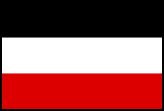
Siam bestellt bei Henschel & Sohn, Kassel, sechs Lokomotiven.
1929 - 1934

Cecil Dormer (1883–1979) ist britischer Envoy Extraordinary and Minister Plenipotentiary
1929

Die Rockefeller Foundation zieht sich aus Siam zurück. Sie hatte 1913 bis 1929 US$ 260.000 ins Gesundheitswesen ausgegeben. Es bleibt nur noch Dr. Louis Shapiro (1886 - 1932), der sich um Hygieneeinrichtungen und Gesundheitszentren kümmert.
1919 - 1932

Außenhandel mit Deutschland:
Abb.: Außenhandel mit Deutschland (in Mio. Baht) 1919 - 1932
[Datenquelle: Credner (1935), S. 328]
1908 - 1932
Export von Gummilack (Lack der Lackschildlaus Kerria lacca Kerr 1782) (in Tonnen)
Abb.: Export von Gummilack (Lack der Lackschildlaus Kerria lacca Kerr 1782) (in Tonnen), 1908 - 1932
[Datenquelle: Credner (1935), S. 256]Gummilack ist der Grundstoff für die Gewinnung von Schellack (เชลแล็ก).
Abb.: Lackschildlaus Kerria lacca (Kerr 1782)
[Bildquelle: Jeffrey W. Lotz, Florida Department of Agriculture and Consumer Services. -- http://www.insectimages.org/browse/detail.cfm?imgnum=5385249. -- Zugriff am 2012-02-18. -- Creative Commons Lizenz (Namensnennung)]
Abb.: Schellack
[Bildquelle: Nuberger13 / Wikimedia. -- Public domain]
1929
Schlagreife Teakholzbäume (Tectona grandis L. f.):
Abb.: Schlagreife Teakholzbäume (Tectona grandis L. f.) (in Tausend) in den Einzugsgebieten der Flüsse, 1929
[Datenquelle: Credner (1935), S. 265]
Abb.: Lage der Flüsse: Mae Nan - แม่น้ำน่าน, Mae Yom - แม่น้ำยม, Mae Wang - แม่น้ำวัง, Mae Ping - แม่น้ำปิง
[Bildquelle: Kmusser / Wikipedia. -- Creative Commons Lizenz (Namensnennung, share alike)]
Abb.: Einzugsgebiet des Salween (သံလွင်မြစ် /แม่น้ำสาละวิน) (hellgelb)
[Bildquelle: Karl Musser / Wikipedia. -- Creative Commons Lizenz (Namensnennung, share alike)]
Abb.: Einzugsgebiet des Mekong (hellgelb)
[Bildquelle: Pfly / Wikipedia. -- Creative Commons Lizenz (Namensnennung, share alike)]
1929
Abb.: Bus und Fahrradrikscha, Bangkok, 1924
1929

Abb.: Reklame für Chevrolet-Autos, 1929
1929
Prinz Damrong Rajanubhab (สมเด็จพระเจ้าบรมวงศ์เธอ พระองค์เจ้าดิศวรกุมาร กรมพระยาดำรงราชานุภาพ, 1862 - 1943) bittet Phra Chen Duriyanga (พระเจนดุริยางค์, aka Peter Feit, 1883 - 1963), ein System für die Notation traditioneller Thai-Musik im westlichen Notensystem zu entwickeln.
Abb.: Beispiel einer Notation durch Phra Chen Duriyanga (พระเจนดุริยางค์)
[Bildquelle: Thailand official year book 1964. -- S. 584]
Abb.: Phra Chen Duriyanga (พระเจนดุริยางค์, aka Peter Feit)
[Bildquelle: th.Wikipedia. -- Public domain]
"Peter Feit (auch Feith oder Veit; * 13. Juli 1883 in Phra Nakhon (พระนคร); † 25. Dezember 1968 in Bangkok) war ein deutsch-stämmiger Komponist und Schöpfer der Musik zur thailändischen Nationalhymne Phleng Chat (เพลงชาติ), die seit dem 10. Dezember 1939 gespielt wird. Feit war der Sohn des deutschen Emigranten Jakob Feit aus Trier und einer thailändischen Mutter. Der Vater war bereits als Musiklehrer am Hofe. Peter Feit erhielt eine Ausbildung am Assumption College (โรงเรียนอัสสัมชัญ) in Bangkok und war seit 1917 am Fine Arts Department (กรมศิลปากร) angestellt. Feit, der seit 1939 mit thailändischem Namen Piti Wathayakon (Thai: ปิติ วาทยะกร) hieß, war als Phra Chen Duryang (Thai: พระเจนดุริยางค – wörtlich: Ehrenwerter Experte für Musikinstrumente) bekannt. Er wurde von König Chulalongkorn (Rama V.) zum Berater in Musikfragen ernannt. Er setzte als erster thailändische Musik in Noten um und bewahrte so wertvolles Liedgut vor der Vergessenheit. Zwischen 1940 und 1950 war er Professor an der Silpakorn-Universität (มหาวิทยาลัยศิลปากร), Bangkok.
Peter Feit starb am 25. Dezember 1968 in Bangkok."
[Quelle: http://de.wikipedia.org/wiki/Peter_Feit. -- Zugriff am 2012-03-26]
1929

Es erscheint:
Meyer, Max F. (Max Friedrich) <1873 - 1967>: The musician's arithmetic : drill problems for an introduction to the scientific study of musical composition. -- Columbia : The University of Missouri, 1929. -- 149 S. : Ill. ; 27 cm. -- (The University of Missouri studies ; Vol. IV, no. 1). -- Enthält eine Beschreibung der siamesischen Tonleiter als Beispiel einer äquidistanten Tonleiter.
1929 (?)

Besuch Ramas VII. in Hat Yai (หาดใหญ่)
Abb.: Lage von Hat Yai (หาดใหญ่)
[Bildquelle: OpenStreetMap. -- Creative Commons Lizenz (Namensnennung, share alike)]
Abb.: Besuch Ramas VII. in Hat Yai (หาดใหญ่), 1929 (?)
Abb.: Besuch Ramas VII. in Hat Yai (หาดใหญ่), 1929 (?)
Abb.: Besuch Ramas VII. in Hat Yai (หาดใหญ่), 1929 (?)
1929
Jungfernflug des Jagdflugzeugs Prajadhipok (ประชาธิปก). Das Flugzeug wurde von Lieutenant Colonel Luang Neramit Baijayonta (หลวงเนรมิตไพชยนต์ = เซี้ยง ศุษิลวรณ์) entwickelt und in der Royal Siamese Air Force Manufacturing Division gebaut.
Abb.: Jagdflugzeugs Prajadhipok (ประชาธิปก)
[Bildquelle: Wikipedia. -- Public domain]
1929
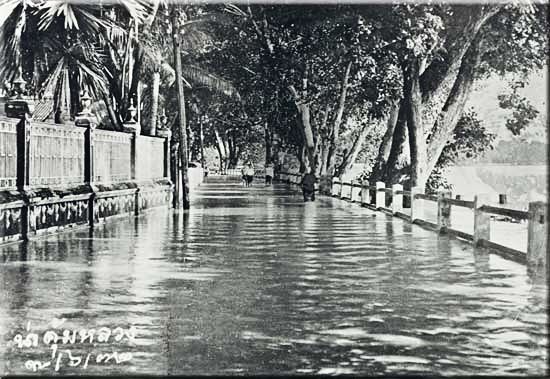
Abb.:
Überschwemmung Chiang Mai (เชียงใหม่)
B.E. 2472: Wichayanon-Straße (ถนนวิชยานนท์)
[Bildquelle: Anne & Heiner Damm. --
http://www.hdamm.de/afotos/ah_opidx.htm. -- Zugriff am 2013-02-28. --
Creative Commons
Lizenz (Namensnennung, share alike)]
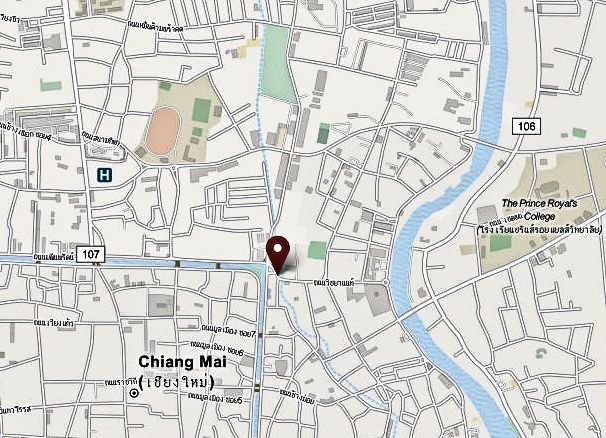
Abb.: Lage der
Wichayanon-Straße (ถนนวิชยานนท์)
[Bildquelle: OpenStreetMap. --
Creative
Commons Lizenz (Namensnennung, share alike)]
1929 - 1931
Es erscheint
วิจิตร วิจิตรวาทการ [Wichit Wichitwathakan] <1898 - 1961>: ประวัติศาสตร์สากล ["Universalgeschichte"]. -- 12 Bde. -- 2472 - 2474 [= 1929 - 1931]
Das ultranationalistische Werk ist der erste Sachbuch-Bestseller Siams.
Abb.: Einbandtitel einer späteren gekürzten Volksausgabe
"Wichit Wichitwathakan (Thai: วิจิตร วิจิตรวาทการ, Aussprache: [wíʔt͡ɕìt wíʔt͡ɕìtwaːtʰáʔkaːn]; * 11. August 1898 als Kimliang Watthanaparuda (กิมเหลียง วัฒนปฤดา / 金良); † 1962) war ein thailändischer Diplomat, Politiker und Schriftsteller. Er verfasste Sachbücher über Geschichte und Kulturentwicklung ebenso wie nationalistisch eingefärbte Dramen. Wichit war ein Vordenker des thailändischen Nationalismus und der Modernisierung des Landes. Außerdem war er der Chefideologe und -propagandist des Ministerpräsidenten Plaek Phibunsongkhram (แปลก พิบูลสงคราม, 1897 - 1964), der von 1938 bis 1944 autoritär herrschte. Wichit, der ein Anhänger des italienischen Faschismus war, entwickelte die ultranationalistische Ideologie des Phibun-Regimes. Leben
Kimliang wurde als Sohn eines Obstgärtners und Kleinhändlers in Uthai Thani (อุทัยธานี) geboren. Laut Aussage eines Cousins war er teilweise chinesischer Abstammung. Er wurde jedoch als Thai erzogen und die chinesische Herkunft prägte ihn nicht. Später, als Vertreter eines übersteigerten thailändischen Nationalismus und antichinesischen Rassismus, leugnete er seine chinesischen Wurzeln. Er behauptete, sein Geburtsname würde auf einen örtlichen Brauch unter ethnisch thailändischen Familien zurückgehen, ihren Kindern chinesische Namen zu geben.[1] An der örtlichen Tempelschule erhielt er nur eine rudimentäre Ausbildung. 1910 ging er nach Bangkok, um seine Studien an der Mönchsschule des Wat Mahathat (วัดมหาธาตุ) fortzusetzen. 1916 brachte er die landesweit beste Leistung in der Pali-Prüfung der 5. Stufe. Er brachte sich selbst Englisch und Französisch bei, obwohl den Tempelschülern verboten war, moderne Fremdsprachen zu lernen. Nach seiner Ordinierung als Novize lehrte er zwei Jahre lang an der Tempelschule.[2]
Er verließ 1918 den Tempel und trat in den auswärtigen Dienst ein. Zunächst war er ein schlecht bezahlter Büroangestellter im Außenministerium. Parallel studierte er jedoch Jura und nach zwei Jahren bestand er ein Examen, dass ihm den Zugang zum höheren Dienst erlaubte.[3] Von 1921 bis 1927 war Kimliang Mitglied der siamesischen Gesandtschaft zunächst in Paris und dann in London. Berufsbegleitend studierte er auch in Frankreich Rechts- und Politikwissenschaft, wurde aber noch vor seinem Abschluss nach England versetzt. In Frankreich freundete er sich mit den beiden späteren Ministerpräsidenten Plaek Phibunsongkhram (damals noch Khittasangkha) und Pridi Phanomyong (ปรีดี พนมยงค์, 1900 - 1983) an. Er heiratete seine Französischlehrerin, Lucienne Laffitte, mit der er zwei Kinder hatte. Das Paar ließ sich 1933 scheiden und Laffitte kehrte mit den Kindern nach Europa zurück.[2][4]
Kimliang bekam den feudalen Ehrentitel Luang Wichitwathakan (หลวงวิจิตรวาทการ) verliehen, den er anschließend statt seines Geburtsnamens führte und unter dem er bekannt wurde. Er schloss sich der von Pridi, Phibun und anderen gegründeten „Volkspartei“ (คณะราษฎร) (khana ratsadon) an, die 1932 die absolute Monarchie stürzte.[5] 1934 bis 1942 war er der Generaldirektor des Amts für bildende Künste.[6] Daneben lehrte Wichit an den beiden führenden Universitäten Thailands, der Chulalongkorn- (จุฬาลงกรณ์มหาวิทยาลัย) und der Thammasat-Universität (มหาวิทยาลัยธรรมศาสตร์), Geschichte und Rechtswissenschaft.[2] Mit der Abschaffung der feudalen Titel 1942 nahm er den bürgerlichen Vornamen Wichit an.[7] Unter dem Ministerpräsidenten Phibunsongkhram war Wichit während des Zweiten Weltkriegs Außenminister und anschließend Botschafter in Japan, von 1951 bis 1952 Wirtschafts- und Finanzminister. Zwischen 1952 und 1958 war er wieder im auswärtigen Dienst tätig, als Botschafter in Indien, Österreich, der Schweiz und Jugoslawien.[8]
Von 1958 bis zu seinem Tod 1962 war er Ratgeber des Ministerpräsidenten Sarit Thanarat (สฤษดิ์ ธนะรัชต์, 1908 - 1963).[6] Für Sarit plante er dessen autoritäre „Revolution“ (pattiwat) und arbeitete einen Wirtschaftsentwicklungs-Plan aus. Er leitete verschiedene Ausschüsse des „Revolutionsrats“ und schrieb Sarits Reden. Selbst als er bereits wegen Herzproblemen, denen er schließlich erlag, im Krankenhaus behandelt wurde, arbeitete er weiter für Sarit. Wichit gilt als der Kopf hinter Sarits paternalistischem Führungsstil und dessen auf Entwicklung (การพัฒนา) (kan phatthana), Ordnung und Anständigkeit (ความเรียบร้อย) (khwam riaproi) ausgerichtete Ideologie.[9][10]
Werk und IdeologieWichit war ein Bewunderer des Führers der italienischen Faschisten, Benito Mussolini (1883 - 1945). Als Chefideologe Phibuns nutzte Wichit das aufkommende Radio, die Verbreitung von Fotografien und Parolen, um die Massen zu mobilisieren. Er war der maßgebliche Kopf hinter Forderungen, die an Großbritannien und Frankreich verlorenen Gebiete aus der Kolonialherrschaft zu „befreien“. Die zerstreute „thailändische Völkerfamilie“ sollte aufgrund ihrer kulturellen Gemeinsamkeiten und „rassischen“ Verwandtschaft vereint werden. Der damalige britische Botschafter in Bangkok, Sir Josiah Crosby, bezeichnete ihn als „pocket Dr. Goebbels“.[11]
Wichit war ein produktiver Bühnenautor. Er verfasste vor allem nationalistische Dramen,[11] mit denen er Grundwissen über die thailändische Geschichte unter das Volk bringen wollte.[2] In Lueat Suphan (เลือดสุพรรณ) („Das Blut Suphanburis“, 1936) würdigte er den Opfermut und Heldengeist des einfachen Volks. Die Hauptheldin ist eine junge Frau, die ihre Landsleute zur letztendlich erfolgreichen Abwehr einer birmanischen Invasion bringt.[12] Auch in anderen Stücken prägte Wichit das Bild der Birmanen als Erzfeinde der Thais.[13] Teilweise veränderte Wichit historische Fakten, um sein nationalistisches Geschichtsbild zu transportieren. So kämpfte Königin Chiraprapha (พระนางจิรประภามหาเทวี) von Lan Na (ล้านนา, heute Chiang Mai - เชียงใหม่), die das historische Vorbild für seine Maha Thewi (มหาเทวี, „Die große Königin“, 1938) ist, in Wirklichkeit sowohl gegen Birma als auch gegen Ayutthaya (อาณาจักรอยุธยา) und für die Unabhängigkeit ihres eigenen Stadtstaats. Bei Wichit dagegen hilft sie bei der Einigung des großen Siamesischen Reichs.[14] In Nanchao (น่านเจ้า, 1939) dagegen sind die Chinesen die Gegenspieler, die das historische Königreich Nanzhao (南詔), das bei Wichit von Thais bewohnt ist, überfallen. Dieses Stück ist vor dem Hintergrund der anti-chinesischen Politik zu sehen, die die thailändische Regierung, der Wichit angehörte, zu dessen Entstehungszeit betrieb.[15][16] In Chaoying Saenwi (เจ้าหญิงแสนหวี „Die Prinzessin von Hsenwi“, 1938) betonte er die historische Solidarität von Thai und Shan (တႆး), die ethnologisch miteinander verwandt sind.[17]
In Anuphap Phokhun Ramkhamhaeng (อานุภาพพ่อขุนรามคำแหง „Die Macht des Königs Ramkhamhaeng“, 1954) stellte er den König Ramkhamhaeng (พ่อขุนรามคำแหงมหาราช, 1239 - 1298) der Sukhothai-Periode (อาณาจักรสุโขทัย) als väterlichen Herrscher und als Idealbild eines thailändischen Landesherrn dar, der mit Barmherzigkeit für sein Volk sorgt und mit Entschlusskraft sein Land zu Größe und Wohlstand führt.[18] Überhaupt überhöhte er die Sukhothai-Ära (13. bis 14. Jahrhundert) als Blütezeit von Zivilisation, Kultur, Kreativität und freiem Handel, an der sich das moderne Thailand wieder orientieren sollte. Er erklärte das mit der typisch thailändischen Freiheit, die in dieser Zeit geherrscht haben soll. Später sei diese unter indischem und kambodschanischem Einfluss der Despotie und der Sklavenhaltung gewichen und die thailändische Kultur verfremdet worden. Die Ayutthaya-Periode (อาณาจักรอยุธยา) sei größtenteils eine verlorene Zeit gewesen.[12][19] Die Könige Naresuan (สมเด็จพระนเรศวรมหาราช, 1555 - 1605) und Narai (สมเด็จพระนารายณ์มหาราช, gest. 1688) nahm er allerdings von diesem Urteil aus und heroisierte sie als starke Krieger-Könige, zum Beispiel in Phra Naresuan Prakat Itsaraphap (พระ
นเรศวรประกาศอิสรภาพ „König Naresuan erklärt die Unabhängigkeit“, 1934).[20]In seinen Werken verknüpfte er Nationalismus mit einem kämpferischen Feminismus. In seinen Dramen kamen, wie in Lueat Suphan (เลือดสุพรรณ) mehrfach Heldinnen vor, die in Befreiungskriegen zu den Waffen griffen und mit ihren Männern gemeinsam kämpften. In seinem Roman Huang Rak Haew Luk (ห้วงรัก เหวลึก)(„Meer der Liebe, Abgrund des Todes“) von 1949 stehen einfache Frauen aus der Unterschicht im Mittelpunkt. Wichit schuf darin ein völlig neues, modernes, kämpferisches Bild der thailändischen Frau.[21] In dem postum erschienenen Roman Sang Chiwit (สร้างชีวิต, „Aufbau eines Lebens“) berichtete Wichit über den Kampf eines Bauernmädchens gegen die gesellschaftliche Ungerechtigkeit und thematisierte so Ausbeutung und die Kluft zwischen Stadt und Land.[2]
Daneben moderierte er Radiosendungen und schrieb über Geschichte, Religion, Kultur und Persönlichkeitsentwicklung.[6] Wichits Werk Prawattisat sakhon (ประวัติศาสตร์สากล, „Universalgeschichte“) von 1929 war der erste Sachbuch-Bestseller in Thailand.[22] Insgesamt veröffentlichte er 49 Bücher über Geschichte, bedeutende Personen und Persönlichkeitsentwicklung, 24 Theaterstücke, 24 Bände seiner Vorlesungsskripkte als Hochschullehrer, 84 Romane und Kurzgeschichten.[2]"
[Quelle: http://de.wikipedia.org/wiki/Wichit_Wichitwathakan. -- Zugriff am 2015-02-24]
1929
Es erscheint der Roman
หม่อมเจ้า อากาศดำเกิง รพีพัฒน์ [Akat Damkoeng] <1905 - 1931>: ละครแห่งชีวิต [Theater des Lebens]
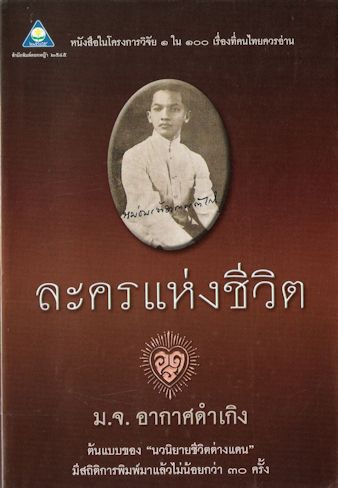
Abb.:
Einbandtitel
Englische Übersetzung:
1929Arkartdamkeung Rapheephat [อากาศดำเกิง รพีพัฒน์] <1905 - 1931>: The circus of life. -- [Übers.: Marcel Barang]. -- Internet edition [for Kindle]. -- 2009. -- (Thai modern classics). -- ISBN 978611 7107 016. -- Originaltitel: ละครแห่งชีวิต (1929)

Es erscheint der Bildband
Hürlimann, Martin <1897 - 1984>: Ceylon und Indochina: Burma, Siam, Kambodscha, Annam, Tongking, Yünnan : Baukunst, Landschaft u. Volksleben. -- Berlin : Wasmuth, 1929.
1929


Es erscheint
Aufhauser, Johann Baptist <1881 - 1963>: Indien und Siam : Bilder von einer Missions-Studienreise. -- Paderborn : Bonifatius, 1929. -- 109 S. : Ill.
Abb.: Einbandtitel
1929
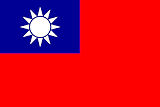
Y. S. Cheng besucht als Gesandter der chinesischen Kuomintang-Regierung (中國國民黨) Bangkok, Pridi Phanomyong (ปรีดี พนมยงค์, 1900 - 1983), Beamter im Justizministerium, knüpft über ihn bleibende freundschaftliche Beziehungen zum Kuomintang.
1929

Bangkok: Gründung einer YMCA (Young Men's Christian Association).
Abb.: ®Logo
[Fair use]
"Dating from 1893, several attempts were made to organize a YMCA association in Bangkok, Thailand (previously known as Siam). However, the formal establishment of an association with a foreign secretary was not begun until 1929, after John R. Mott [1866 - 1955] answered a request for assistance by a group of churches and missions with a $21 thousand gift from the James Stokes Society. The National Councils of the United States and Canada took responsibility for the project, and Walter A. Zimmerman was placed in charge of the Bangkok Association after a preliminary investigation was conducted by the International Committee. Zimmerman began to learn the Thai language and established a provisional board of directors with Samuel Benthoon Boon Itt as president in 1932. The son of a Presbyterian missionary, Boon Itt and others had constructed a mission known as the Boon Itt Institute in 1907. The mission transferred its property, equipment and assets to the YMCA to become the Boon Itt Memorial Branch of the Young Men’s Christian Association of Bangkok. Although three quarters of the Bangkok Association’s board of directors were required to be members of an evangelical church, general membership was granted to "any youth of good moral character, without distinction of nationality, race, or religion."
Membership grew quickly at the Bangkok Association, which offered programs in physical education, Bible study, student groups, and hobby groups. A night school for young men and women was established in 1936. By the 1940s, the Association was overcrowded; however, an Englishwoman named Emily Collins donated her Anglican girls’ school to the YMCA in 1941 – allowing for the continued expansion of the Bangkok Association. Immediately prior to the Japanese occupation of Thailand during World War II, all foreigners on the board of directors resigned. When the Allies gained control of the country, the Association’s property was turned into a military hospital for Indian troops. The rundown building was returned to the YMCA in 1946.
By 1951, the Bangkok Association had a membership of 2,072 men and 351 boys, and it was estimated that another 225,000 people were served through vocational classes, sports, and outdoor excursions, among other programs. The Association continued to develop throughout the 1950s and 1960s via secretarial training and the construction of building additions, student hostels, and camps using money donated from the Buildings for Brotherhood Campaign, as well as local fundraising efforts.
The first YMCA association outside of Bangkok was established in Chiang Mai [เชียงใหม่] – the major city of northern Thailand – in 1969 with the assistance of the Bangkok YMCA and the Canadian University Service Overseas. From early on, the Chiang Mai Association was primarily concerned with rural development work. The Association helped to train Thai development leaders, built roads, schools, wells, and educated farmers on improved agricultural techniques. However, the Association’s connection with USAID was controversial among leftist students in the city. Furthermore, the rural development work in the borderlands region of northern Thailand was slowed by political opposition and the danger posed by communist insurgent groups.
Following the end of the Vietnam War in 1975, the YMCA in Thailand worked to assist the flood of refugees streaming into the country via the Indo-China Refugee Program. In addition, the Bangkok Association shifted its focus to include more humanitarian work. Expansion continued through the construction of new buildings, as well as the establishment of new YMCA centers outside of Bangkok and Chiang Mai. Throughout the 1980s, the YMCA of Thailand promoted development work, and the Northern Women's Development Foundation was established in 1989 to encourage Thai women to participate in development projects."
[Quelle: http://special.lib.umn.edu/findaid/html/ymca/yusa0009x2x43.phtml. -- Zugriff am 2014-03-24]
1929

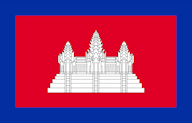
Es erscheint der Kambodscha-Roman:
Groslier, George <1887 - 1945>: Le retour à l'Argile. -- Paris : Emile-Paul, 1929. -- 270 S.
Abb.: Einbandtitel einer späteren Ausgabe
1929

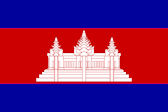
Es erscheint:
Meyer, Roland: Komlah, visions d'Asie. -- Paris : Roger, 1929. -- 247 S. : Ill. ; 19 cm. -- (Voyages de jadis et d'aujourd'hui ; 1929: 1)
Abb.: Einbandtitel
"Roland Meyer’s story of Komlah is that of a European who found the Khmers so overwhelmingly congenial that he gave his life to studying them. He became so steeped in Khmer life that he was dominated by what he had intended to master. In analysing the causes of their charming decadence his personality and will power were eaten away. In feeling so keenly their charm he absorbed the germs of their decadence." [Quelle: Thompson, Virginia <1903 - 1990>: French Indo-China. -- London : Allen, 1937. -- 516 S. ; 24 cm. -- S. 357. -- Fair use]
1929-04
Über Furcht vor dem Geist (ผี) im Kindsbett Verstorbener:
"Dr. Henry R. O’Brien, formerly of Chiengmai [เชียงใหม่], tells of one of his cases in which the birth was incomplete. The doctor removed the placenta just before the woman died. To his surprise the family was grateful beyond measure for his help in delivering them from a danger which he had not apprehended at all. The spirit of a woman dying in childbirth is fearsome. If she dies with the placenta within her she is twice dreadful. The most terrible spirit of all is that of a woman dying with child unborn. The family hardly regarded the death because they were grateful to have been saved from a malevolent spirit that would almost certainly have returned to trouble relatives and friends. In what would probably have been a futile effort to escape the spirit, they would have had to lower her body through a hole torn in the floor, take it out of the compound through a hole torn in the fence, presumably to confuse the spirit so that it could not find its way back, and then dispose of the body by burial instead of cremation." [O’Brien, Henry: The Evil Pees. -- Siam Outlook. -- 1929-04. -- Zitiert in: Landon (1939), S. 197f.]
1929-04
Erste antikommunistische Aktion siamesischer Behörden: geheime Deportation von kommunistischer Chinesen durch das Innenministerium.
1929-04-01
Erstmals wird die Ernennung von Beamten gesetzlich geregelt: durch den Civil Service Act:
"The present Thai Civil service system evolved from the bureaucracy of the absolute monarchy. Before 1929, the supervisors of government organizations had full authority to recruit personnel on any basis they liked. There were no prescribed qualification standards for those who entered the civil service. No centralized control over civil service administration existed. Such state of affairs was, however, changed by an advent of a civil service act which took effect on 1 April 1929. The purpose of this act is reflected in its preface: "It is the desire of His Majesty to systematize the civil service administration so that competent men will be selected for public office. They will have a career in the civil service so that they will not be anxious to earn their income in other ways. The public service will gain more benefits because there will be public servants who are competent and who know the ways and means of public service and also are aware of their duties and responsibilities and have permanent discipline."
The result was a system in which the civil servant had personal rank not dissimilar to that of the military forces. Salaries were determined by rank and the duties of the occupied. A Civil Service Commission was created to serve as a central personnel agency. Recruitment was made on the basis of ability and competence. A career civil service system was established which provided the civil servant with status and security."
[Quelle: Thailand official yearbook 1964. -- S. 60]
Abb.: Siamesischer Beamter beim Diktat, ca. 1900
[Bildquelle: Wikimedia. -- Public domain]
1929-04-11

Prinz Purachatra (พระเจ้าบรมวงศ์เธอ พระองค์เจ้าบุรฉัตรไชยากร กรมพระกำแพงเพ็ชร อัครโยธิน, 1881 - 1936) mit Familie trifft in Berlin ein.
"Wie geplant traf Prinz Purachat mit seiner Familie am 11. April 1929 in Berlin ein. Doch entgegen seiner vorherigen Planung, zunächst einen Arzt aufzusuchen und sich einer mehrwöchigen Kur zu unterziehen, entschied sich der Prinz, direkt in seiner Eigenschaft als siamesischer Handelsminister Verhandlungen wegen eines Ausbaus der Transradioverbindung Nauen-Bangkok mit der Transradio- und Telefunkengesellschaft, - die Firma B. Grimm & Co. in Bangkok hatte zuvor, also am 15. Februar 1929, der siamesischen Regierung eine 20 kw Kurzwellenstation geliefert - aufzunehmen.
Abb.: Lage der Großfunkstelle Nauen
[Bildquelle: OpenStreetMap. -- Creative Commons Lizenz (Namensnennung, share alike)]
Abb.: Großfunkstelle Nauen, 1930-10
[Bildquelle: Bundesarchiv, Bild 102-10517 / CC-BY-SA 3.0]Im Anschluss an diesen Verhandlungen führten Prinz Purachat und seine Familie mehrfache telefonische Gespräche mit Bangkok, was dazu führte, dass der Prinz die hervorragende Qualität der Kurzwellenstation in Bangkok lobte. Auch stellte Prinz Purachat „mit Befriedigung" fest, dass die siamesische Sprache sich noch besser zum fernmündlichen Gespräch eigne als die europäischen Sprachen. Zum Schluss wurde dann vorgesehen, für die Bangkokstation noch einige Zusatzgeräte zu bestellen, die die Aufnahme einer regelmäßigen drahtlosen Fernsprechverbindung zwischen Deutschland und Siam ermöglichen sollten.
Neben den Verhandlungen mit der Transradio- und Telefunkengesellschaft widmete sich Prinz Purachat der Absatzsicherung eines siamesischen Landesprodukts, des Schellacks, indem er der Schallplattenfirma Carl Lindström A.G. einen Besuch abstattete. Nach Zeitungsangaben konnten der Herstellungsprozess der Schallplatten sowie die Aufnahmetechnik der Firma große Anerkennung finden.
Abb.: Inserat der Carl Lindström A.G., 1928Auch wurde berichtet, dass Max von Schillings [1868 - 1933], der zur Zeit des Besuchs des Prinzen seine neue Oper „Mona Lisa" [Uraufführung 1915] für die Aufnahme dirigierte, von dem Prinzen selbst empfangen worden sei.
Abb.: Textbuch, 1914Danach habe Prinz Purachat in das Mikrophon gesprochen und die gesehenen Entwicklungen in Deutschland gelobt.
Doch neben seiner Tätigkeit als Handelsminister wollte der hohe Gast auch seinem eigenen Interesse nachgehen. Da sich Prinz Purachat für die Fotografie interessierte und auf diesem Gebiet hervorragende Kenntnisse besaß, wurde vom 18. bis 21. April 1929 ein Ausflug nach Dresden unternommen, um ein der bedeutendsten Kamarawerke der Stadt, das Zeiß-Ikon-Werk, zu besichtigen."
Abb.: Inserat 1929[Quelle: Catthiyakorn Sasitharamas [คัททิยากร ศศิธรามาส]: Die deutsch-thailändischen Beziehungen in der Zeit der Weimarer Republik bis zum Ende des Zweiten Weltkriegs. -- Hamburg : Kovač, 2012. -- 346 S. ; 21 cm. -- (Schriftenreihe Schriften zur Geschichtsforschung des 20. Jahrhunderts ; Bd. 4). -- ISBN 978-3-8300-6361-2. -- Zugl.: Hamburg, Univ., Diss., 2012. -- S. 115f. -- Fair use]
1929-04-26 - 1929-05-01

Prinz Purachatra (พระเจ้าบรมวงศ์เธอ พระองค์เจ้าบุรฉัตรไชยากร กรมพระกำแพงเพ็ชรอัครโยธิน, 1881 - 1936) weilt auf Einladung des Ostasiatischen Vereins fünf Tage in Hamburg.
"Der Einladung des Ostasiatischen Vereins, zu dessen Arbeitsfeld neben Ostasien bekanntlich auch Siam gehörte, folgend trafen von Berlin kommend Prinz Purachat und seine Familie am 26. April 1929 in Hamburg ein. Gleich am nächsten Tag wurde der Prinz samt seiner Familie vom Bürgermeister Roß [Rudolf Adolf Wilhelm Roß, 1872 - 1951] im Rathaus empfangen. Nach dessen Besichtigung folgte ein Frühstück im „Haus Wedells", bei dem der Bürgermeister den Prinzen begrüßte und Frau Bürgermeisterin Petersen [Gattin von Ex-Bürgermeister Carl Wilhelm Petersen] den Damen Gesellschaft leistete.
Abb.: Lage des Haus Weddels
[Bildquelle: OpenStreetMap. -- Creative Commons Lizenz (Namensnennung, share alike)]Abends gab der Ostasiatische Verein als einladende Partei im Hotel „Vier Jahreszeiten" dem Gast zu Ehren ein Essen, das die Vertreter der hamburgischen Behörden sowie der wirtschaftlichen Kreise vereinte. Nach Zeitungsangaben hieß es, dass der Vorsitzende des Vereins, Herr Mohr [Friedrich Wilhelm Mohr, 1881 – 1936], den Gast mit herzlichen Worten willkommen geheißen und sogleich auf die Schönheiten, die wirtschaftlichen Entwicklungen und die stolze Geschichte Siams hingewiesen habe. Anschließend habe er auf das Wohl des Prinzen, seiner Familie und der Zukunft Siams getrunken, während Prinz Purachat kurz von seinem Deutschlandeindruck gesprochen und ebenso auf die Zukunft Deutschlands getrunken habe.
Neben den ihm gewidmeten Empfängen hatte der siamesische Gast noch Gelegenheit, Hagenbecks Tierpark unter Führung von Carl Lorenz Hagenbeck [1908 – 1948] einen Besuch abzustatten. Danach wurde das elektrische Kraftwerk - Prinz Purachat war nach Zeitungsangabe ein ausgebildeter und fortschrittlicher Ingenieur - mit dem zu dieser Zeit größten Dieselmotor der Welt besichtigt [15.000 PS-Dieselmotor als Schnellstartreserve, 1926].
Abb.: Kraftwerk Hamburg: 15.000 PS-Dieselmotor als Schnellstartreserve, 1926
[Bildquelle: http://corporate.vattenfall.de/globalassets/deutschland/newsroom/2014/unternehmensgeschichte_vattenfall_hamburg_120_jahre_energie.pdf. -- ZUgriff am 2016-01-15. -- Fair use]Doch auch der Kurzwellensender Bergedorf [vermutlich der 1931 in Betrieb gehende Bergedorfer Sender der Küstenfunkstelle Norddeich Radio] sollte nicht unbesucht bleiben, wobei nach dessen Besichtigung ein Besuch in Friedrichsruh folgte. Dieser Besuch sollte an die freundschaftlichen Beziehungen, die der verstorbene König Chulalongkom, der Vater des Prinzen Purachat, seit seinem Besuch in diesem Ort im Jahre 1897 zum Fürsten Bismarck unterhalten hatte, erinnern. Nach einem fünftägigen Besuch verließ Prinz Purachat samt seiner Familie am I. Mai 1929 Hamburg, um dann weiter nach Heidelberg zu fahren. Um von dem Prinzen und seiner Familie Abschied zu nehmen - so wurde es in einer Zeitung berichtet - hätten sich am Hauptbahnhof „verschiedene Vertreter der Hamburger Siamfirmen, der Hamburger siamesischen Kolonie unter Führung des Hamburger siamesischen Generalkonsuls [Martin] Pickenpack und Vertreter des Ostasiatischen Vereins Hamburg-Bremen mit seinem Geschäftsführer Regierungsrat Dr. Mohr" versammelt."
[Quelle: Catthiyakorn Sasitharamas [คัททิยากร ศศิธรามาส]: Die deutsch-thailändischen Beziehungen in der Zeit der Weimarer Republik bis zum Ende des Zweiten Weltkriegs. -- Hamburg : Kovač, 2012. -- 346 S. ; 21 cm. -- (Schriftenreihe Schriften zur Geschichtsforschung des 20. Jahrhunderts ; Bd. 4). -- ISBN 978-3-8300-6361-2. -- Zugl.: Hamburg, Univ., Diss., 2012. -- S. 116f. -- Fair use]
1929-04-29
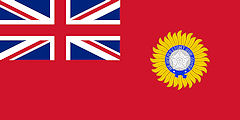
Erster Nonstoppflug von Großbritannien nach Karachi (كراچى, Indien, heute Pakistan): 6,646 km in 51 Std.. Das Flugzeug ist eines der beiden Fairey Long-range Monoplane der britischen Royal Air Force.
Abb.: Fairey Long-range Monoplane
[Bildquelle: Air Ministry Photo / Wikimedia. -- Public domain]
1929-05-01 - 1929-05-07

Prinz Purachatra (พระเจ้าบรมวงศ์เธอ พระองค์เจ้าบุรฉัตรไชยากร กรมพระกำแพงเพ็ชรอัครโยธิน, 1881 - 1936) weilt in Heidelberg, um sich vom Internisten und Kardiologen Prof. Ludolf von Krehl (1861 - 1937) behandeln zu lassen. Anschließend geht er auf Europareise und kehrt 1929-09-05 nochmals nach Berlin zurück, um mit dem Handelsminister und dem Generaldirektor der Reichsbahn Kontakt aufzunehmen.
Abb.: Ludolf von Krehl, 1925
[Bildquelle: Wikimedia. -- Public domain]
1929-05-09

Totale Sonnenfinsternis. Beobachtungsstation in Pattani (ปัตตานี). Vorbereitung für die internationalen Beobachtungsexpeditionen hat der Schweizer Regierungsmeteorologe Heinrich Brändli getroffen.
Abb.: Verlauf der totalen Sonnenfinsternis 1929-05-09 über Südsiam
[Bildquelle: http://eclipse.gsfc.nasa.gov/SEsearch/SEsearchmap.php?Ecl=19290509 / Google Maps. -- Zugriff am 2016-02-16]

Eine deutsche Beobachtungsexpedition unter Prof. Hans Rosenberg (1879 - 1940) ist bereits im April nach Pattani (ปัตตานี) gekommen.
1929-06-01
In der ersten Nummer der Zeitschrift Suphap-burut (สุภาพบุรุษ - Der Gentleman) erscheint die erste Folge von Lilasat (ลีลาศาสตร์ - Lehrbuch des Liebesspiels) von Sanit Charoenrat (สนิท เจร็ฌรัฐ).
Abb.: Titelleiste
[Bildquelle: Barmé (2002), S. 183]
1929-06-05 - 1935-06-07

Ramsay MacDonald (1866 - 1937) ist Prime Minister Großbritanniens.
1929-06-18

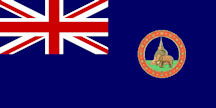
Bangkok Times berichtet, dass singhalesische Mönche darum gebeten haben, dass Mönche aus Thailand nach Ceylon kommen, um die korrekte Form der Mönchsordination zu lehren.
1929-07
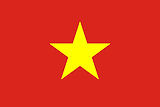
Der vietnamesiche Revolutionär Ho Chi Minh (1890 - 1969) ist in Nordostthailand. Er organisiert die Organized Annamite Fraternity of Siam (Hoi Than Ai Nguoi Annam O Xiem)
1929-07
Bangkok: Gründung des Siam Special Committee der South Seas Communist Party (aka Nanyang Communist Party - 南洋共产党) für Südostasien. Das Committee soll sich um die vorwiegend chinesische kommunistische Bewegung vor Ort kümmern.
"Nevertheless, much to the dismay of their foreign supervisors and to the relief of Siamese police, the early Chinese communists in Siam usually carried out their tasks incautiously. Among the numerous ideological, political, organizational, disciplinary, and administrative mistakes committed by them and severely censured by the South Seas Communist Party around November 1929 were the following:
- arranging party meetings in tea houses and restaurants in contempt of police capability, resulting in the arrest of many members;
- being careless with organizational secrets;
- recruiting new members without a probation period;
- setting up a store to sell cheap bread to workers but ending up pursuing profit;
- and depositing funds in the bank to earn interest instead of spending them to expand operations among workers.
It was probably this type of careless activity which invited the Siamese authority’s first explicitly anti-communist measure, a secret deportation order by the Ministry of Interior in April 1929, as well as a series of big police catches of over one hundred communists from late 1929 through 1930. "
[Quelel: Kasian Tejapira [เกษียร เตชะพีระ] <1957 - >: Commodifying Marxism : the formation of modern Thai radical culture, 1927-1958. -- Kyoto : Kyoto Univ. Pr., 2001. -- 390 S. : Ill. ; 23 cm. -- (Kyoto area studies on Asia ; 3). -- ISBN 1876843985. -- Revision of the author's thesis (doctoral) -- Cornell University, 1992. -- S. 12]
1929-07-01

Vereinbarung zwischen den deutschen und siamesischen Regierungen über die Aufhebung des Sichtvermerkszwangs im gegenseitigen Reiseverkehr.
1929-07-04
Bangkok Times nennt das Telefonsystem Siams "the worst in Asia".
1929-07-10

Siam schickt den Kadetten Nai Prasit Chaiyo zur Ausbildung im militärischen Flugwesen nach Deutschland. Er macht in Marburg Abitur und erwirbt bei der Verkehrsfliegerschule Stettin die Flugzeugserlaubnis A. Später stellt sich heraus, dass er farbenblind ist.
Abb.: Lage von Stettin
1929-09
Eröffnung des Luxushotels Trocadero in Bangkok
Abb.: Inserat
1929-09

Herr Hertz, Angestellter der Deutschen Gesandtschaft besucht die Bibliothek der philosophischen Fakultät der Chulalongkorn University (จุฬาลงกรณ์มหาวิทยาลัย). Er berichtet darüber an das Auswärtige Amt:
„[Es] waren mehrere Wandschränke bis obenhin mit englischer und französischer Literatur angefüllt, während Deutschland durch ein Lehrbuch für Chemie für höhere Gymnasialklassen aus dem Jahre 1882, eine Monographie über das Bergwerkswesen im Harz und drei Bände Kemmerich Kulturkuriosa [1] vertreten war". „Unter diesen Umständen darf ich anheimstellen, in Form einer Bücherstiftung diesem Stand der Dinge geneigtest abhelfen zu wollen".
Seiner Meinung nach kämen für die Stiftung vor allem Werke aus dem Gebiete der Heilkunde, der Physik, Chemie, Zoologie und Botanik, auch der Agrikultur in Betracht. Dass diese Bücherstiftung für die deutsche Kulturarbeit wichtig sei, ließ Herr Hertz nochmal am Ende seines Berichtes mit der Äußerung betonen, dass sonst „die Studenten der deutschen Sprache zu einer Fortsetzung ihrer Studien kaum ermutigt werden" könnten."
[Quelle: Catthiyakorn Sasitharamas [คัททิยากร ศศิธรามาส]: Die deutsch-thailändischen Beziehungen in der Zeit der Weimarer Republik bis zum Ende des Zweiten Weltkriegs. -- Hamburg : Kovač, 2012. -- 346 S. ; 21 cm. -- (Schriftenreihe Schriften zur Geschichtsforschung des 20. Jahrhunderts ; Bd. 4). -- ISBN 978-3-8300-6361-2. -- Zugl.: Hamburg, Univ., Diss., 2012. -- S. 180. -- Fair use]
1 Kemmerich, Max <1876 - 1932>: Kultur-Kuriosa. -- München : Langen , 1909 - 1926. -- 3 Bde.
Abb.: Titelblatt
Abb.: Inhaltsverzeichnis Bd. 1
Abb.: Inhaltsverzeichnis Bd. 2
1929-09-12 - 1929-10-04

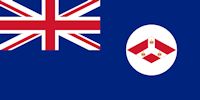

Das Königspaar ist auf Staatsbesuch in
- Singapur (britisch)
- Java und Bali (Niederländisch Indien / Nederlands-Indië)
Regent während der Abwesenheit des Königs ist Prince Paribatra Sukhumbhand, Prince of Nakhon Sawan (สมเด็จพระเจ้าบรมวงศ์เธอ เจ้าฟ้าบริพัตรสุขุมพันธุ์ กรมพระนครสวรรค์วรพินิต, 1881 - 1944)

In Surabaya (Java) kauft der König drei Autos der deutschen Firma Mercedes-Benz.
1929-09-24

Tod von Prinz Mahidol Adulyadej (สมเด็จพระมหิตลาธิเบศรอดุลยเดชวิกรม พระบรมราชชนก, 1892 - 1929), Vater der Könige Rama VIII. und Rama IX.
Abb.: Prinz Mahidol Adulyadej (สมเด็จพระมหิตลาธิเบศรอดุลยเดชวิกรม พระบรมราชชนก), ca. 1920
[Bildquelle: Wikipedia. -- Public domain]
"Prinz Mahidol Adulyadej von Songkhla (Somdej Chao Fa Mahidol Adulyadej Kromma Luang Songkla Nakarin in Thai สมเด็จฯ เจ้าฟ้ามหิดลอดุลยเดช กรมหลวงสงขลานครินทร, Prinz von Songkhla; * 1. Januar 1892 in Bangkok; † 24. September 1929 in Bangkok), Sohn von König Chulalongkorn (Rama V.) und Königin Savang Vadhana (สมเด็จพระศรีสวรินทิราบรมราชเทวี, 1862 - 1955), war der Vater von Ananda Mahidol (Rama VIII.) und Bhumibol Adulyadej (Rama IX.), dem amtierenden König von Thailand. Frühe Jahre
In seiner Jugend wurde Mahidol Adulyadej zunächst in der Hofschule des Großen Palastes (พระบรมมหาราชวัง) erzogen. Im Alter von 13 erhielt er den Titel des Prinzen von Songkhla. Im selben Jahr wurde er nach London gesandt, wo er 18 Monate an der Harrow School ausgebildet wurde, bevor er nach Potsdam an die Kadettenanstalt der preußischen Armee und später an die Hauptkadettenanstalt Groß-Lichterfelde wechselte. Auf Wunsch seines Halbbruders, des Königs Vajiravudh (Rama VI.), ging Prinz Mahidol dann an die Kaiserliche Marineschule Mürwik, wo er u. a. einen Wettbewerb zur Konstruktion eines Unterseebootes gewann.
Bei Ausbruch des Ersten Weltkriegs kehrte Prinz Mahidol als Leutnant sowohl der Kaiserlichen als auch der Königlich-Thailändischen Marine nach Thailand zurück und übernahm zunächst die Ausbildung von Marineoffizieren. Nach einem Streit um die sinnvollste Ausrichtung der thailändischen Marine, wobei es im Wesentlichen um die optimale Schiffsgröße für die thailändische Flotte ging, verließ er die Marine und kümmerte sich fortan um die medizinische Versorgung und Ausbildung im Land.
Medizinische TätigkeitDas thailändische Gesundheitssystem befand sich zur Zeit des Ersten Weltkriegs weit unter dem westlichen Standard und erhielt auch nicht sehr viel Aufmerksamkeit seitens des Königs und der Regierung. Das von König Chulalongkorn gegründete Sirirat-Krankenhaus (ศิริราชพยาบาล) war zu klein, hatte zu wenig Geldmittel und Personal zur Verfügung, um die Gesundheit der Bevölkerung wesentlich zu verbessern. Zur Zeit des Austritts von Prinz Mahidol aus der Marine war dessen Halbbruder, der Prinz von Rangsit, Leiter des Gesundheitswesens. Dieser versuchte, Prinz Mahidol für seine Sachse zu gewinnen, nämlich die medizinische Versorgung der Bevölkerung auf westlichen Standard zu heben. Nach anfänglichem Zögern stimmte Prinz Mahidol zu, doch wollte er sich zunächst in einem Studium ausbilden lassen.
Prinz Mahidol studierte Öffentliches Gesundheitswesen an der Harvard-Universität. Auf seine Veranlassung wurden vier weitere Studenten nach Harvard geschickt, die Medizin und Krankenpflege studieren sollten, unter denen sich die 18-jährige Sangwal ( สังวาลย์, 1900 - 1995) Talabhat befand, die spätere Ehefrau von Prinz Mahidol. 1921 schloss er seine Ausbildung ab und ging zunächst nach Edinburgh, wo er als Repräsentant Thailands mit der Rockefeller-Stiftung verhandelte. 1923 kehrte er nach der Geburt seiner ersten Tochter, Prinzessin Galyani Vadhana (กัลยาณิวัฒนา, 1923 - 2008), nach Thailand zurück und übernahm den Posten eines Generaldirektors für Universitätsfragen im Bildungsministerium. Daneben lehrte er aber auch am Königlichen Medizinkolleg.
Späte JahreAufgrund der Verschlechterung seines Gesundheitszustandes ging Prinz Mahidol 1925 nach Heidelberg, um seine Nieren behandeln zu lassen. Hier wurde sein erster Sohn, Prinz Ananda Mahidol, der spätere König Rama VIII., geboren. Kurze Zeit darauf ging Prinz Mahidol nach Harvard zurück, wo er Medizin studierte. In Cambridge (Massachusetts) wurde 1927 der heutige König Bhumibol Adulyadej (Rama IX.) geboren. Nach Abschluss seines Studiums kehrte Prinz Mahidol im Dezember 1928 nach Thailand zurück.
Dort arbeitete er kurze Zeit am McCormick-Krankenhaus in Chiang Mai (เชียงใหม่), bevor sich sein Gesundheitszustand erneut stark verschlechterte. Prinz Mahidol kehrte daraufhin nach Bangkok zurück und starb am 24. September 1929 im Sra Pathum-Palast (วังสระปทุม)."
[Quelle: http://de.wikipedia.org/wiki/Mahidol_Adulyadej. -- Zugriff am 2012-04-03]
1929-10-24

Schwarzer Donnerstag: Börsenkrach in New York. Beginn der Weltwirtschaftskrise.
Abb.: Dow Jones Industrial Average 1929-10 bis 1930-10
[Bildquelle: Wikipedia. -- Public domain]
Abb.: Exporte und Staatsausgaben Siams während (1929 - 1932) und nach (1935 - 1938) der Weltwirtschaftskrise
[Datenquelle: Southeast Asia : a historical encyclopedia from Angkor Wat to East Timor / ed. by Ooi Keat Gin <1959 - >. -- Santa Barbara [u.a.] : ABC Clio, 2004. -- 3 Bde. -- ISBN 1-57607-770-5. -- Bd. 1. -- S. 551]
1929-11-13
Bangkok Times berichtet, dass Chinesen in Bangkok Propagandaschriften in Chinesisch, Thai und Englisch in Umlauf bringen, in denn u.a. die Umwandlung Siams in eine Republik gefordert wird.
1929-12

Es erscheint:
Abb.: "Der Bergbau in Indochina"
1929-12 - 1930-02
Der vietnamesische Revolutionär Nguyễn Ái Quốc (Ho Chi Minh, 1890 - 1969) besucht von Siam aus Hong Kong (香港) und Shanghai (上海). Er wird Chef des Far Eastern Bureau der Komintern (Dritte Internationale - Коммунистический интернационал - Коминтерн, 3-й Интернационал) in Shanghai. Er gründet in Hongkong ein Southern Bureau des Far Eastern Bureau. Dieses ist zuständig für kommunistische Tätigkeiten in Südostasien.
Abb.: Nguyễn Ái Quốc (Ho Chi Minh), 1921
[Bildquelle: Agence Meurisse / BNF / Wikimedia. -- Public domain / domaine public]
Abb.: Plakat der Komintern, 1922 / von Иван Васильевич Симаков / Ivan Vasilyevich Simakov ( 1877—1925)
[Bildquelle: Wikimedia. -- Public domain]
1929-12
"the author of this statement is of the half-baked type and speaks in such a way as to make it seem no one were happy. But where could a paradise on earth be found? "
It is worth pondering what it would have taken to convince these Siamese royal rulers that people like Mr. Piatoe or Lim Sitiang were Thai. Obviously, it went beyond simple legal criteria. Nor was it merely a matter of blood or racial pedigree, for race, as a rule, was invoked in Thai cultural politics only selectively and contextually. It was forgotten as often as it was remembered, depending on the demand of a given situation. Therefore, in the final analysis, what was at issue here was neither a legal nor a racial meaning of Thainess, but an ethno-ideological one. To King Prajadhipok and Prince Boriphat, Mr. Piatoe did not seem to be a Thai because he did not fit the presupposed ethno-ideological identity of Thainess constructed by ideologues of the Thai ruling royalty."
[Übersetzt in: Kasian Tejapira [เกษียร เตชะพีระ] <1957 - >: Commodifying Marxism : the formation of modern Thai radical culture, 1927-1958. -- Kyoto : Kyoto Univ. Pr., 2001. -- 390 S. : Ill. ; 23 cm. -- (Kyoto area studies on Asia ; 3). -- ISBN 1876843985. -- Revision of the author's thesis (doctoral) -- Cornell University, 1992. -- S. 23]
1929-12-22

Drei siamesische Flugzeuge starten zum Überlandflug von Bangkok nach Delhi [दिल्ली / دلی]. Mit Ausnahme der Motoren stammen die Flugzeuge vollständig aus siamesischer Fertigung.
Abb.: Bangkok - Allahabad [इलाहाबाद / الہ آباد] - Delhi [दिल्ली / دلی] (nicht tatsächliche Flugroute)
[Bildquelel: Baedeker 1914]
Abb.: Prajadhipok (ประชาธิปก), Kampfflugzeug aus siamesischer Produktion, 1929
[Bildquelle: Wikimedia. -- Public domain]
""Nichtsdestoweniger hat der tatsächliche Ausgang des Fluges kaum alle Hoffnungen erfüllt, die man siamesischerseits auf ihn gesetzt hatte",
so urteilte der deutsche Gesandte über den Auslandflugversuch der siamesischen Luftflotte in seinem Bericht vom 28. Januar 1930. Denn zunächst sei bereits am ersten Tag das Flugzeug, mit dem der Leiter dieser Unternehmung, Luang Neramit [หลวงเนรมิตไพชยนต์] geflogen sei, wegen Aussetzen des Motors gezwungen worden, über einem unzugänglichen Dschungelgebiet notzulanden, wobei Luang Neramit ums Leben gekommen sei. Um diesen Vorfall zu melden, seien die beiden restlichen Flugzeuge nach Bangkok zurückgekehrt, allerdings am nächsten Tag aufs Neue in Richtung Delhis aufgestiegen.
„Unglücklicherweise", so Dr. Asmis [Rudolf, 1879 - 1945, deutscher Gesandter], sei ein weiteres Flugzeug bei einer Zwischenlandung in Allahabad [इलाहाबाद / الہ آباد] ernstlich beschädigt, wobei sich Oberst Phraya Vehas, der die Leitung der Unternehmung übernommen habe, den Arm gebrochen habe. Am Ende der Reise sei nur ein einziges Flugzeug in Delhi angekommen, das Mitte Januar 1930 sein Rückweg nach Siam gemacht habe und am 23. Januar wohlbehalten wieder in Bangkok landen konnte. Dieser glücklichen Landung folgend sei den Insassen des Fluges ein festlicher Empfang bereitet worden, an dem sich auch europäische Kreise beteiligen durften."
[Quelle: Catthiyakorn Sasitharamas [คัททิยากร ศศิธรามาส]: Die deutsch-thailändischen Beziehungen in der Zeit der Weimarer Republik bis zum Ende des Zweiten Weltkriegs. -- Hamburg : Kovač, 2012. -- 346 S. ; 21 cm. -- (Schriftenreihe Schriften zur Geschichtsforschung des 20. Jahrhunderts ; Bd. 4). -- ISBN 978-3-8300-6361-2. -- Zugl.: Hamburg, Univ., Diss., 2012. -- S. 137. -- Fair use]
1929-12-26
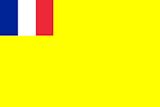
Die französische Fluggesellschaft Air Asie eröffnet den Linien-Flugverkehr zwischen Saigon und Bangkok. Air Asie besitzt zwei einmotorige Potez 32 Flugzeuge.
Abb.: Strecke Saigon - Bangkok
[Bildquelle: Bartholomew, J. G. <1860 - 1920>: A literary & historical atlas of Asia. -- London, o. J.]
Abb.: Potez 32
[Bildquelle: kitchener.lord. -- http://www.flickr.com/photos/27862259@N02/7261636020/. -- Zugriff am 2015-01-13. -- Creative Commons Lizenz (Namensnennung, keine kommerzielle Nutzung, keine Bearbeitung)]
1930-01-06
Innenminister Prinz Paribatra Sukhumbandh, Fürst von Nakhon Sawan (สมเด็จพระเจ้าบรมวงศ์เธอ เจ้าฟ้าบริพัตรสุขุมพันธุ์ กรมพระนครสวรรค์วรพินิต, 1881 - 1944) über Kommunisten:
"[People who believe in communism like Mr. Piatoe].. .are likely to cause a lot of troubles. It should not be taken simply for granted that he is a Thai by birth since his disposition is by no means Thai.. .[He] should not be allowed to depend on His Majesty’s merciful protection any further." [Übersetzt in: Kasian Tejapira [เกษียร เตชะพีระ] <1957 - >: Commodifying Marxism : the formation of modern Thai radical culture, 1927-1958. -- Kyoto : Kyoto Univ. Pr., 2001. -- 390 S. : Ill. ; 23 cm. -- (Kyoto area studies on Asia ; 3). -- ISBN 1876843985. -- Revision of the author's thesis (doctoral) -- Cornell University, 1992. -- S. 5]
1930-01-16

Der Engländer Frank Whittle (1907 - 1996) meldet das Strahltriebwerk als Patent an. Das Strahltriebwerk wird Antrieb der meisten Düsenflugzeuge sein.
Abb.: Whittle-Strahltriebwerk W2/700 von 1939
[Bildquelle: Gaius Cornelius / Wikimedia. -- Public domain]
1930-01-25
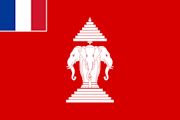


Um den Einfluss des siamesischen Buddhismus in den französischen Protektoraten Laos und Kambodscha einzuschränken, erlässt der französische Generalgouverneur von Indochina einen Erlass zur Gründung eines umfassenden Institute Bouddhique mit folgenden Zweigstellen:
- Bibliotheken und Museen in
- Phnom Penh (ភ្នំពេញ)
- Vientiane (ວຽງຈັນ)
- Luang Prabang (ຫຼວງພະບາງ)
- Écoles preparatoires de Pali in
- Laos
- Kambodscha
- Cochinchina
- École superieur de Pali in
Phnom Penh (ភ្នំពេញ)
Abb.: Lage von Luang Prabang (ຫຼວງພະບາງ), Vientiane (ວຽງຈັນ), Phnom Penh (ភ្នំពេញ), Cochinchina
[Bildquelle: Wikimedia. -- Public domain]
1930-02

Der dänische Kronprinz, Christian Frederik Franz Michael Carl Valdemar Georg (1899 - 1971) sowie Arveprins Knud Christian Frederik Michael (1900 - 1976) und Prins Axel Christian Georg til Danmark og Island (1888 - 1964) besuchen Siam.
Abb.: Kronprinz Christian Frederik Franz Michael Carl Valdemar Georg, 1935
[Bildquelle: Wikimedia. -- Public domain]
Abb.: Arveprins Knud Christian Frederik Michael, 1935
[Bildquelle: Wikimedia. -- Public domain]
Prins Axel Christian Georg til Danmark og Island
[Bildquelle: Wikimedia. -- Public domain]
1930-02-03
Der vietnamesische Revolutionär Nguyễn Ái Quốc (Ho Chi Minh, 1890 - 1969) (1890 - 1969) und andere gründen in Hong Kong (香港) die Kommunistische Partei Indochinas (Đảng cộng sản Đông Dương).
Abb.: Poster 75 Jahre Kommunistische Partei Vietnams, 2005
[Bildquelle: antje verena. -- http://www.flickr.com/photos/antjeverena/4615651240/. -- Zugriff am 2012-01-21. -- Creative Commons Lizenz (Namensnennung, keine kommerzielle Nutzung, keine Bearbeitung)]
1930-02-05

Sir Cecil Clementi (1875 – 1947) ist British High Commissioner in Malaya
Abb.: Sir Cecil Clementi
[Bildquelle: Wikimedia. -- Public domain]
1930-02-10

Mutinerie de Yên Bái / Khởi nghĩa Yên Bái
Abb.: Lage von Yên Bái
[Bildquelle: OpenStreetMap. -- Creative Commons Lizenz (Namensnennung, share alike)]
"The Yên Bái mutiny was an uprising of Vietnamese soldiers in the French colonial army on 10 February 1930 in collaboration with civilian supporters who were members of the Việt Nam Quốc Dân Đảng (VNQDĐ, the Vietnamese Nationalist Party). The aim of the revolt was to inspire a wider uprising among the general populace in an attempt to overthrow the colonial regime and establish independence. The VNQDĐ had previously attempted to engage in clandestine activities to undermine French rule, but increasing French scrutiny on their activities led to their leadership group taking the risk of staging a large scale military attack in the Red River Delta in northern Vietnam.
Shortly after midnight on 10 February, about 50 Vietnamese soldiers (Tirailleurs indochinois) of the 4th Regiment of Tonkinese Rifles within the Yen Bay garrison turned on their French officers with assistance from about sixty civilian VNQDDĐ members who invaded the camp from the outside. The mutiny failed within 24 hours when the majority of the Vietnamese soldiers in the garrison refused to participate and remained loyal to the colonial army. Further sporadic attacks occurred across the Delta region, with little impact. French retribution to the attack was swift and decisive. The main leaders of the VNQDD were arrested, tried and put to death, effectively ending the military threat of what was previously the leading Vietnamese nationalist revolutionary organisation."
[Quelel: https://en.wikipedia.org/wiki/Y%C3%AAn_B%C3%A1i_mutiny. -- Zugriff am 2016-02-25]
1930-02-28
Gründung von Christiani & Nielsen (Siam) Ltd.
Abb.: ®Logo
"Christiani & Nielsen is a construction contractor with major operations in Thailand and Southeast Asia. Originally a Danish company, it is today a listed company majority owned by the Crown Property Bureau (สำนักงานทรัพย์สินส่วนพระมหากษัตริย์) of King Bhumibol of Thailand. Founding and early years
Christiani & Nielsen was established by Rudolf Christiani (1877 - 1960), a Danish civil engineer, and Aage Nielsen, a Captain in the Royal Danish Navy, in Copenhagen in 1904 to build bridges, marine works, and other reinforced concrete structures.[1] It soon established a branch in Hamburg, and after World War I, extended its operations to the United Kingdom, South America, Australia and Africa.
Thailand operationsChristiani & Nielsen (Siam) Ltd. was established on 28 February 1930.[1] Over the years, it has been responsible for many projects, including
- The Democracy Monument (อนุสาวรีย์ประชาธิปไตย)
- Khlong Toei (คลองเตย) Port
- The Krungthep (สะพานกรุงเทพ), Krung Thon (สะพานกรุงธน)) and Nonathburi (นนทบุรี) bridges spanning Bangkok's Chao Phraya River (แม่น้ำเจ้าพระยา)
- Rajdamnern Boxing Stadium (สนามมวยราชดำเนิน)
- The Sukhothai Hotel (โรงแรมสุโขทัย)
- The 13th Asian Games Sports Stadium
- All Season Place office complex
The Thai company was listed on the Stock Exchange of Thailand in 1991. In December 1992 it completed a reverse takeover of its publicly listed Danish parent company – the first such transaction in Thai business history. The Thai management succeeded in taking over the mother company without paying the full price by claiming bankruptcy in the process. The result of this is that the company today uses the lucrative brand of Christiani & Nielsen without having paid the families of the founders.[citation needed]
It later expanded into Malaysia, Vietnam, and China, along with investment in engineering and property related businesses.
After the Asian Economic Crisis of 1997, the company restructured its businesses and disposed of many subsidiaries and investments outside of the core construction business in Thailand."
[Quelle: http://en.wikipedia.org/wiki/Christiani_%26_Nielsen. -- Zugriff am 2012-06-04]
1930-03
Der vietnamesische Revolutionär Nguyễn Ái Quốc (Ho Chi Minh, 1890 - 1969) kehrt aus Hong Kong (香港) nach Siam zurück. Er hat von der Komintern (Dritte Internationale - Коммунистический интернационал - Коминтерн, 3-й Интернационал) den Auftrag, die Kommunistische Partei Siams zu gründen durch Zusammenschluss der Chinesen der South Seas Communist Party (aka Nanyang Communist Party - 南洋共产党) und der vietnamesischen Kommunisten in Nordostthailand.
1930-03 - 1931

Vietnam: Nghệ Tĩnh Aufstand (Xô Viết Nghệ Tĩnh)
"The Nghệ-Tĩnh Soviets, or Nghệ Tĩnh uprising, was the series of uprisings, strikes and demonstrations by Vietnamese peasants, workers and intellectuals against the colonial French regime, the mandarinate and Vietnamese landlords, which occurred from 1930-1931. Nghe-Tinh is the compound which stands for the two provinces of Nghệ An and Hà Tĩnh in central Vietnam which were the main areas where the revolt took place. Demonstrations expressed the general anger against French colonial policies such as heavy taxation and state monopolies on certain goods, as well as the corruption and perceived unfairness of local notables and mandarins. Demonstrators, while violent and armed with little more than the most basic of farm weapons, were brutally suppressed by the overwhelming military strength of the French. The revolt waned by the second half of 1931 due to famine and suppression. This revolt is commonly remembered in the Socialist Republic of Vietnam today as the "Nghe-Tinh soviet" movement (Vietnamese: Phong trào Xô Viết Nghệ-Tĩnh)." [Quelle: https://en.wikipedia.org/wiki/Ngh%E1%BB%87-T%C4%A9nh_Soviets. -- Zugriff am 2016-08-24]
Abb.: Lage der provinzen Nghệ An und Hà Tĩnh
[Bildquelel: CIA. -- Public domain]
1930-03-02

Einweihung der katholischen Wohnsiedlung "St. Theresa's City" in Bangkok. Bauherr: ein reicher Katholik. Zweck:
Katholiken machen: man kann kein Mädchen aus der Siedlung heiraten, wenn man nicht katholisch ist oder wird
Fernhalten der Katholiken vom Einfluss ihrer buddhistischen Familien
1930-03-12 - 1930-04-12

Salzmarsch Mohandas Karamchand Gandhi's (મોહનદાસ કરમચંદ ગાંધી) gegen die britische Herrschaft in Indien.
"Der Salzmarsch (दांडी मार्च) oder die Salz-Satyagraha (सत्याग्रह ) von 1930 war eine Kampagne Mohandas Gandhis, die das Salzmonopol der Briten brechen sollte und letztlich zur Unabhängigkeit Indiens von Großbritannien führte. Der Salzmarsch war die spektakulärste Kampagne, die Gandhi während seines Kampfes um Unabhängigkeit initiierte. Diese Aktion sollte den zivilen Ungehorsam verdeutlichen und ein Zeichen gegen die Abhängigkeit von zu hohen Steuern durch Großbritannien sein." [Quelle: http://de.wikipedia.org/wiki/Salzmarsch. -- Zugriff am 2013-10-02]
1930-03-14
In der Zeitschrift Suphab nari (สุภาพนรี - Die Lady) erscheint die erste Folge der Fortsetzungsgeschichte Chom chori (จอมโจรี - Die Räuber-Anführerin) von Frl. Sichan (น[าง] ส[าว] ศรีจันทร์).
Abb.: Titelleiste
[Bildquelle: Barmé (2002), S. 200]
1930-03-20
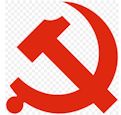
Mit Hilfe von Fu Ta Chang, Mitglied der Kommunistischen Partei Chinas (中國共產黨), gelingt es dem vietnamesischen Revolutionär Nguyễn Ái Quốc (Ho Chi Minh, 1890 - 1969), in Bangkok chinesische und vietnamesische Kommunisten zu versammeln. Man beschließt
den Zusammenschluss der Chinesen der South Seas Communist Party (aka Nanyang Communist Party - 南洋共产党) und der vietnamesischen Kommunisten in Nordostthailand
die Gründung der Kommunistischen Partei Siams (Communist Party of Siam / 共產黨暹羅 / Đảng Cộng sản Siam / พรรคคอมมิวนิสต์แห่งสยาม)
die Gründung eines vorläufigen Zentralkomitees in Bangkok ("zentrales Exekutivkomitee" nach Anerkennung der Partei durch die Komintern - Dritte Internationale - Коммунистический интернационал - Коминтерн, 3-й Интернационал)
Die Partei wird vermutlich 1935 von der Komintern anerkannt. Bis 1934 bleibt die Kommunistische Partei Siams unter der direkten Verantwortung der Communist Party of Malaya / 马来亚共产党 / Parti Komunis Malaya)
Die Kommunistische Partei Siams hat bei ihrer Gründung 41 vietnamesische Mitglieder - zum Vergleich: in Vietnam gibt es 265 Kommunisten.
Die Kommunistische Partei Chinas in Siam veröffentlicht:
Draft statement analyzing the government and economy of Siam and the procedures for associations [in Chinesisch]
Darin ist beschrieben, warum und wie Siam infiltriert werden soll durch ein geheimes Netzwerk in Clubs, Organisationen und Gewerkschaften. Das Dokument beruht auf Mao Zedong's (毛澤東, 1893 - 1976) 中国社会各阶级的分析 ("Analyse der Klassen in der chinesischen Gesellchaft") vom 1926-03
DRAFT STATEMENT ANALYZING THE GOVERNMENT AND ECONOMY OF SIAM, AND PROCEDURES FOR THE ASSOCIATION, APPROVED BY THE SPECIAL ENLARGED COMMITTEE, MARCH 20
[Translation from Chinese]Siam is an agricultural country, but since the imperialists came to sell goods the economy, which was formerly self-sufficient, has been upset to the point of long since being ruined. The basic agricultural product is rice, which accounts for 90% of the total annual exports, going mostly to British colonies. The major import is cotton textiles, of which 80% or more come from Great Britain. Cloth used to be woven in Siam, but now there is scarcely any in the market. Thai handicrafts are not exported at all, and raw materials are in short supply, insufficient for the internal needs of the country. Siam is therefore nothing but a great market for the imperialists.
Formerly, since Great Britain and France had equal influence in Siam, Siam was called an independent country. Now it is clear that Siam is really a dependency of Great Britain, as in 1855 the British were the first to force Siam to make a treaty of commerce. The important point of that treaty was that Great Britain got certain special rights, namely the right to trade freely and the stipulation that import duties were not to exceed 3%. When World War I broke out in Europe, the government of Siam had to send a contingent of soldiers to help the British. The British Consul... [note in Thai says that here the Chinese text is too faint to read]... changed in many ways, international courts or advisers.... Today the administrative power in Siam remains in the hands of the British as before, while in the economy Great Britain overshadows all other countries. Of the annual trade of Siam, 80% and up of the exports are British, while for imports the figure is 97% or more. Of the passenger vessels that enter the Gulf of Siam in one year, one third or more of the tonnage is British, and British shipping is more than twice that of any other country. Siam’s mining in the northern Malay peninsula is completely controlled by seven big British companies. The Hongkong and Shanghai Bank has the power to dominate the financial affairs of Siam. The money which the government of Siam has borrowed to construct railways is all British and, moreover, the railway line from Bangkok to British Malaya is clearly wholly the property of the British. Considering all these things, administrative and financial power in Siam is in the hands of the British, and it is clear that Siam is a colony of the British imperialists.
As time went by, differences developed between the British and the French in Siam. In 1887 France used military force to seize Thai territory in order to make Siam a French Asian colony like Vietnam, but the French were opposed by the British who wanted to control Siam themselves. Great Britain and France therefore agreed to have equal rights in Siam. But that situation has now changed—on the one hand Siam has become a dependency of Great Britain as was shown, and on the other hand the United States and Japan have recently come in and are competing with the British for influence. The Japanese in Siam, in addition to competing to the utmost in commerce, in 1928 set up a special association to concentrate their resources for expanding their influence in Siam, and the Americans, going even further, from the time of the First World War became the first to consider giving up their consular court rights in Siam, in order to remove British influence. In 1925 the American adviser to the Ministry of Foreign Affairs4wrote openly attacking the British, and recently the Americans have established a special commercial association in order the better to compete with the British commercially and to exploit Siam. Therefore, in the present state of divisions among the imperialists to seize Siam, Great Britain versus the United States must be considered the principal split, followed by Great Britain versus Japan and France, as in the other countries of the ‘South Seas’.
At present the government administration in Siam is a system in which the royal family are masters of the land with governing power. At the same time, as a result of the imperialists sending in money there has developed a class of compradores of businesses and banks who curry favor with those holding royal power. Thus at present the royal government and the compradore class, owners of the land, are instruments for delivering Siam to the imperialists. Near the end of the nineteenth century three areas in the region of Cambodia were transferred to France and four areas in the Trengganu region were given to Great Britain. Supposedly this was in return for the surrender of consular court rights, but in fact it was like giving away something for nothing. The revision of the unequal treaties, as before, actually resulted in treaties which still severely restricted Thai sovereignty; for example, the foreign loans only resulted in the imperialists further seizing control of financial affairs. As for joining the Allied forces in 1917, it only demonstrates subservience to the British imperialists. The spoils seized from the German enemy in Siam, with the exception of the Legation, all went to the British and Siam got nothing. In sum, Siam at present is actually a colony of the British, and therefore the British benefit from helping the government to rule as their agents of oppression.
The imperialists want the absolute monarchy in Siam to be perpetuated in order to preserve their instrument of oppression. They want the royal government to endure. The economic foundation of this government is apparent-the royal family who have the ruling power are large landowners. This is the important economic foundation of the government, and a means by which the imperialists increase their influence and domination in Siam.
The result of this imperialist economic oppression will surely be the speedy ruin of the farmers. The government increasingly extorts high taxes, and the capitalists demand high rates of interest on loans. Oppression is pervasive. The farmers, who are the majority, thus become more impoverished each day, and suffer increasingly. The numbers of thieves and bandits increase in proportion. Yet there are many well-to-do Thai farmers. The ordinary ones have 50 or 100 rai each,7 and those who rent land pay only about one tenth of their income in rent. Therefore some people think that the land question in Siam is not an important problem, and that as for poor farmers it is a question of capital rather than land. This kind of thinking is the thinking of those who still have an imperfect understanding of the situation. Even though it is not yet possible to describe in detail the basis for the farmers’ struggle, nonetheless looking at the characteristics of oppression and the monopolization of land one can at present distinguish the following important points: (1) The royal family, who control the government, have the advantage, and thus use their privileges to expropriate more land each day. (2) High interest rates are demanded and the farmers are oppressed in every way, until the farmers no longer make enough to pay their debts, and have to give up their land. (3) The imperialists want to profit from a rise in land prices, and are going around buying up farmers’ land. (4) At present only one third of the land of Siam has been cleared for cultivation. If more is cleared in the future, the farmers will not benefit. The land of the farmers at present remaining will be taken away so that less and less is left, and land rents will become increasingly oppressive. (5) Farmers who are hired laborers are especially oppressed. When the farming season is over their employers take all of their earnings and dismiss them with nothing. This is one common practice. Even worse is to hire them permanently and slowly bind them and get the advantage until they become slaves. Farmers who have no land must suffer oppression like this. It is clear that the struggle to revise the existing system of concentrated land holdings must break out someday, and the land problem will surely be the basis of the change of the system of government of Siam to that of democracy.
A consequence of the imperialists’ coming to compete for profits is that for the Thai people money is increasingly tight. Since the end of the First World War, it is apparent that money has become scarce just as in the various colonial lands of the ‘South Seas’. Agriculture and manufacturing have to a large extent come to a standstill. Among workers about 2 out of 3 are now unemployed. Many Chinese shops and factories have closed, as for example last year as many as 60% of the rice mills ceased production. Because of this shortage of money, the royal government, in order to preserve its ruling power, has tried to improve the condition of the people, as for instance by lowering export duties, which is actually not of much importance in aiding industrial capital in the country, and by trying to improve the economic situation of the farmers, in hopes of postponing. their political awakening. But this alleged improvement in the economic condition of the farmers, other than protecting the interests of the landlords, only amounts to the construction of some irrigation works in areas close to Bangkok. In addition, there are also what are called ‘agricultural cooperatives’, but the result of these cooperatives is only to collect high interest rates and oppress the farmers, not to make the farmers prosper. The reason the farmers cannot be helped to escape from poverty is largely because the imperialists maintain their advantage and are not willing to concede anything at all, as clearly shown in the case of giving up the consular courts and revising the treaties. As for raising the duty on imports from 3% to 5%, it applies only to certain imports which are small in quantity and are not necessities—it still cannot be said that Siam can set the duty rates herself. Even though when the United States and Great Britain were at odds over the treaties, the United States declared that it was willing to give up its consular court rights in Siam, this was only American policy, which uses the strategy of withdrawal to attack Siam, which is an even more vicious policy than before. To think that this is a concession by the Americans would be a very serious misunderstanding.
Various Classes in Siam
- Siam has people of many races mixed together, as in the various colonial lands of the ‘South Seas’, and all are similarly oppressed by the imperialists. The people of Siam are of the Thai, Lao, Mon, and Malay races, as well as many still uncivilized groups living in the jungle. Of those who have come from other countries, the Chinese, Indians, and Vietnamese are greater in number than other nationalities. According to the latest figures the total population of Siam is over 11 million. Of these the Thai are the largest group, followed by the Chinese. In terms of occupations, farmers are the largest group.
- Siam has more than 300,000 monks. This group, dependent upon the rice of others for sustenance, is one instrument for the preservation of the power of royalty. They are land owners and lend money at high rates of interest. Although they are of high standing, for the most part they have studied the principles of capitalism, like the Europeans.
- The royal family are a special class and few in number. On the one hand they are great landowners, and on the other hand they rule as agents of the imperialists.
- The landowning class: all who have land, but do not work the land themselves are included in the ‘landowning class’.
- The compradores: agents of the imperialists who import goods and exchange them for agricultural products to export are the trading compradores. In addition, there are banking compradores who lend money to the farmers at high rates of interest. This class works closely with those of rank and authority.
- Those with capital who sell goods in the villages: this group is closely associated with the landowners. They are clever in selling merchandise and loaning money to the farmers, asking high prices and high rates of interest, then waiting to get the crop or confiscate the land.
- Thai capitalists: history shows that persons of this class can also join in the struggle to change the system of government. But in Siam this group is very weak, and for the most part they combine with the ruling class to oppress the poor classes. Even worse, some aid the imperialists in vying to seize Siam as a colony of this or that country (this is clearly seen in their showing approval of the Americans—who are disciples of imperialism—believing that they have good intentions toward Siam). Thus we see that this group cannot be with us. Only the masses can be the force to oppose imperialism.
- The wealthy farmers: this group are in part farmers, in part landowners. In Siam they are not few in number. They farm themselves, and also invest money seeking profit. When they have a lot of money they go into trade and consider themselves superior, hiring either seasonal laborers or permanent laborers who eventually become slaves. These are the wealthy farmers.
- The farmers:
- The middle level farmers: whether they farm their own land or farm rented land, they make enough to support their families with perhaps a little left over. Sometimes they might hire some temporary farm labor, but they have no land to rent to others. These are called middle level farmers,
- The poor farmers: these are divided into two groups. One group farms a little land and can make enough to support themselves, without having to hire themselves out to others. The other group cannot produce enough to live, and have to work as laborers.
- Rural workers: this group are laborers working in farming or lumbering in the forests. They are the propertyless people of the villages. In Siam this group is large, and in the future it will in the nature of things get even larger.
- Those in industry: Siam, although a country with a relatively poor economy, nevertheless has some large enterprises (such as railways, sawmills, and cement factories), and these enterprises have more than 3000 workers, all Thai or Chinese. Even though at present the total number of workers is not yet known with certainty, it is apparent that since the end of the war in Europe there has been rapid development.
Siam, in addition to always having had bandits and robbers causing trouble in various provinces, has also had leaders gathering followers to foment rebellions in various places, as for example about the middle of last year there were many reports of opposition to the king. It should be remembered that upon investigation it was found that these doings were not aimed at changing the system, but were caused by government officials who had been dismissed from their positions, who conspired with local authorities to seize power, acting only in their own self-interest. It was also found that there were persons buying large quantities of guns and ammunition from abroad. It is clear that all this was being supported behind the scenes by the imperialists. But it shows that the reason that the government is always divided is because the condition of the farmers is so bad. In yet another case, not too long ago merchants in Bangkok united to oppose the collection of the capitation tax, closing their stores and stopping work for many days. This shows that the division between the capitalist class and the official class will persist for a long time.
In summary:
- Siam surely cannot remain outside the historical laws affecting the condition of all countries in this age, and it is possible that the country will be partitioned by the imperialists. The people of
Siam being in a situation like this, it is natural that they must undergo even greater suffering, and must be oppressed by the royal power, which is protected by the imperialists. The only way to escape this suffering is to destroy the imperialists and those who serve as their instruments, and it is necessary to oppose the establishment of a national assembly and a constitution, which would only be a means of deceiving the people.- Those Thai without property will now persuade the farmers to join the struggle. The general slogan should be ‘Begin by opposing rents and moneylenders, until the owners are overthrown’. This slogan means to oppose only the rich farmers, because most of the middle level farmers should rally to our side. As for the poor farmers and rural laborers, they should all be united with us.
- Up until this time, Siam has never experienced a violent struggle to change the system. But at present it is apparent that the class conflict is becoming increasingly intense, and even members of the official class cannot get along with one another. The propertyless class should point out to the people that this strife is the result of the imperialists scrambling to expand their influence in Siam. If disturbances break out, we will not help either side. Our desire is that both sides be defeated, then immediately to unite the people to struggle against the imperialists, against the power of royalty, and against the landowners. If there develops a split between the wealthy people and the royal class, then the propertyless class should oppose royalty, but at the same time should not become intimate with the wealthy class. The struggle must continue until the propertyless class are the leaders, holding absolute power.
- The conclusions of this analysis of the government and economy of Siam are in accord with the procedures for parties in the South Seas which the central association sent to the South Seas parties October 23 of last year, and both can be used as a guide to operations.
Until the third meeting of representatives in the South Seas is held, this document should be considered as only a draft.
February 20, 1930
Committee in Siam
[A note in Thai says that there follows more discussion of the communists’ methods of operation, but that the text is faded and can be read only in parts and that therefore it has not been translated. Signed by the head Chinese translator of the Bangkok police, dated 6 May 1930].
[Zitiert in: Batson, Benjamin Arthur <1942 - >: The end of the absolute monarchy in Siam. -- Singapore : Oxford Univ. Pr., 1984. -- 349 S. : Ill. ; 22 cm. -- (Southeast Asia publications series ; no. 10). -- ISBN 0-19-582612-4. -- S. 307 - 315]

Rama VII. kommentiert das Dokument in einem vertraulichen Rundschreiben:
"This is very well written, and not the work of someone foolish. Also, it was not written in China, but in Siam. The author is a knowledgeable person well worth listening to, and I would like for all members of the cabinet to read it in order to see what communist propaganda in Siam is like. If the contents of this document were disseminated among the agriculture classes in Siam, many might find it quite convincing. It is very different from all other such documents I have seen." [Übersetzung: Batson, Benjamin Arthur <1942 - >: The end of the absolute monarchy in Siam. -- Singapore : Oxford Univ. Pr., 1984. -- 349 S. : Ill. ; 22 cm. -- (Southeast Asia publications series ; no. 10). -- ISBN 0-19-582612-4. -- S. 171]
1930-03-31
Mitglieder der Siamese Red Cross Society (สภากาชาดสยาม)
Abb.: Mitglieder der Mitglieder der Siamese Red Cross Society (สภากาชาดสยาม), 1930-03-31
[Datenquelle: Siam : general and medical features / by the Executive Committee of the 8th Congress of Far Eastern Association of Tropical Medicine. -- Bangkok : Bangkok Times, 1930. -- S. 273.]Erklärung:
"The members of the Society are divided into the following five classes :—
- Special Members are those persons who are invited to join the Society by the Vice- President with the approval of the Council.
- Honorary Members are those who, since the year B. E. 2457 (A. D. 1914), have given the Society in one single donation cash, or other property, to the value of not less than Baht 3,000.
- Extraordinary Members are those persons who contribute not less than Baht 100 per year to the Society’s funds. A life membership for this class is also granted for the subscription of a single sum of Baht 800.
- Ordinary Members are persons paying a yearly subscription of not less than Baht 10. A life membership for this class is also granted for a single donation of Baht 150.
- Popular Members are those persons who pay a yearly subscription of not less than one Baht, their membership lasting only for the year in which the said subscription has been paid."
[Quelle: Siam : general and medical features / by the Executive Committee of the 8th Congress of Far Eastern Association of Tropical Medicine. -- Bangkok : Bangkok Times, 1930. -- S. 273.]
ausführlich: http://www.payer.de/thailandchronik/ressourcen.htm
Phongpaichit, Pasuk <ผาสุก พงษ์ไพจิตร, 1946 - > ; Baker, Chris <1948 - >: Thailand : economy and politics. -- Selangor : Oxford Univ. Pr., 1995. -- 449 S. ; 23 cm. -- ISBN 983-56-0024-4. -- Beste Geschichte des modernen Thailand.
Ingram, James C.: Economic change in Thailand 1850 - 1870. -- Stanford : Stanford Univ. Pr., 1971. -- 352 S. ; 23 cm. -- "A new edition of Economic change in Thailand since 1850 with two new chapters on developments since 1950". -- Grundlegend.
Akira, Suehiro [末廣昭] <1951 - >: Capital accumulation in Thailand 1855 - 1985. -- Tokyo : Centre for East Asian Cultural Studies, ©1989. -- 427 S. ; 23 cm. -- ISBN 4896561058. -- Grundlegend.
Skinner, William <1925 - 2008>: Chinese society in Thailand : an analytical history. -- Ithaca, NY : Cornell Univ. Press, 1957. -- 459 S. ; 24 cm. -- Grundlegend.
Mitchell, B. R. (Brian R.): International historical statistics : Africa and Asia. -- London : Macmillan, 1982. -- 761 S. ; 28 cm. -- ISBN 0-333-3163-0
Credner, Wilhelm <1892 - 1948>: Siam das Land der Tai : eine Landeskunde auf Grund eigner Reisen und Forschungen. -- Stuttgart : Engelhorn, 1935. -- 423 S. : Ill.
Landon, Kenneth Perry <1903 - 1993>: Siam in transition : a brief survey of cultural trends in the five years since the revolution of 1932. -- Chicago : Univ. of Chicago Press, 1939. -- 328 S. ; 24 cm.
Barmé, Scot: Woman, man, Bangkok : love, sex, and popular culture in Thailand. -- Lanham : Rowman & Littlefield, 2002. -- 273 S. : Ill. ; 24 cm. -- ISBN 0-7425-0157-4
Siam : general and medical features / by the Executive Committee of the 8th Congress of Far Eastern Association of Tropical Medicine. -- Bangkok : Bangkok Times, 1930. -- 332 S. : Ill ; 25 cm.
Zu Chronik B. E. 2473 / 1930-04 - 1931-03